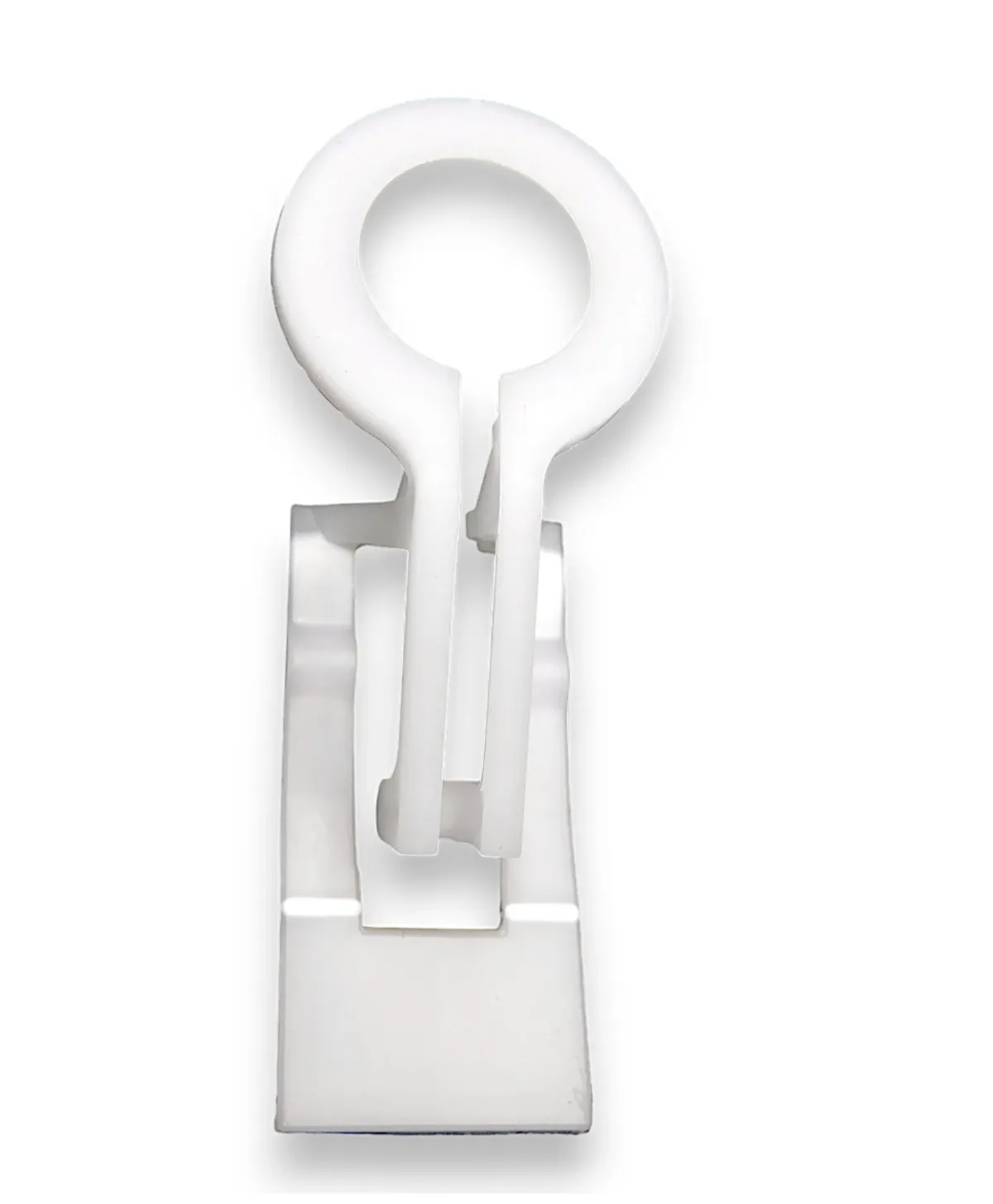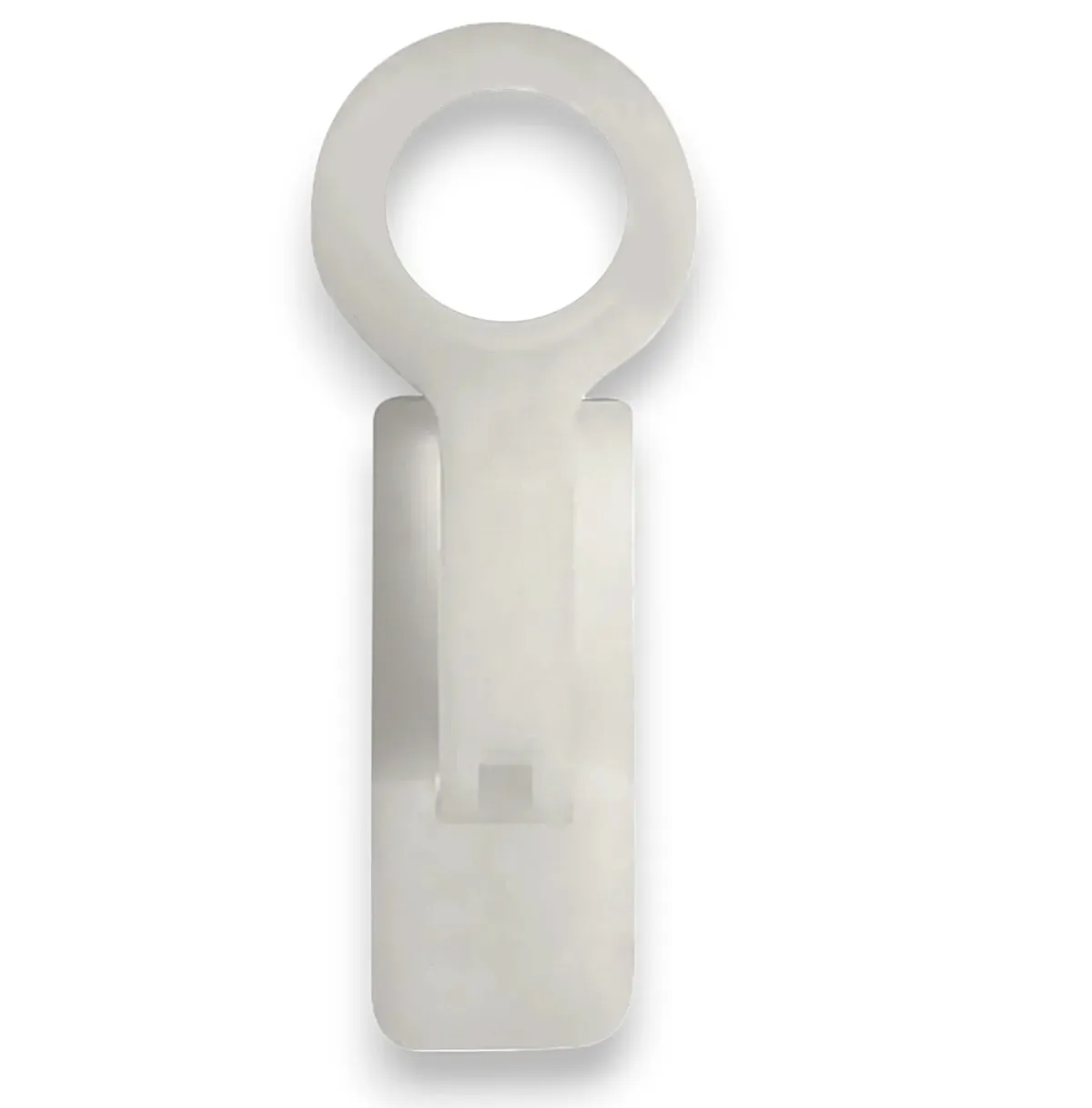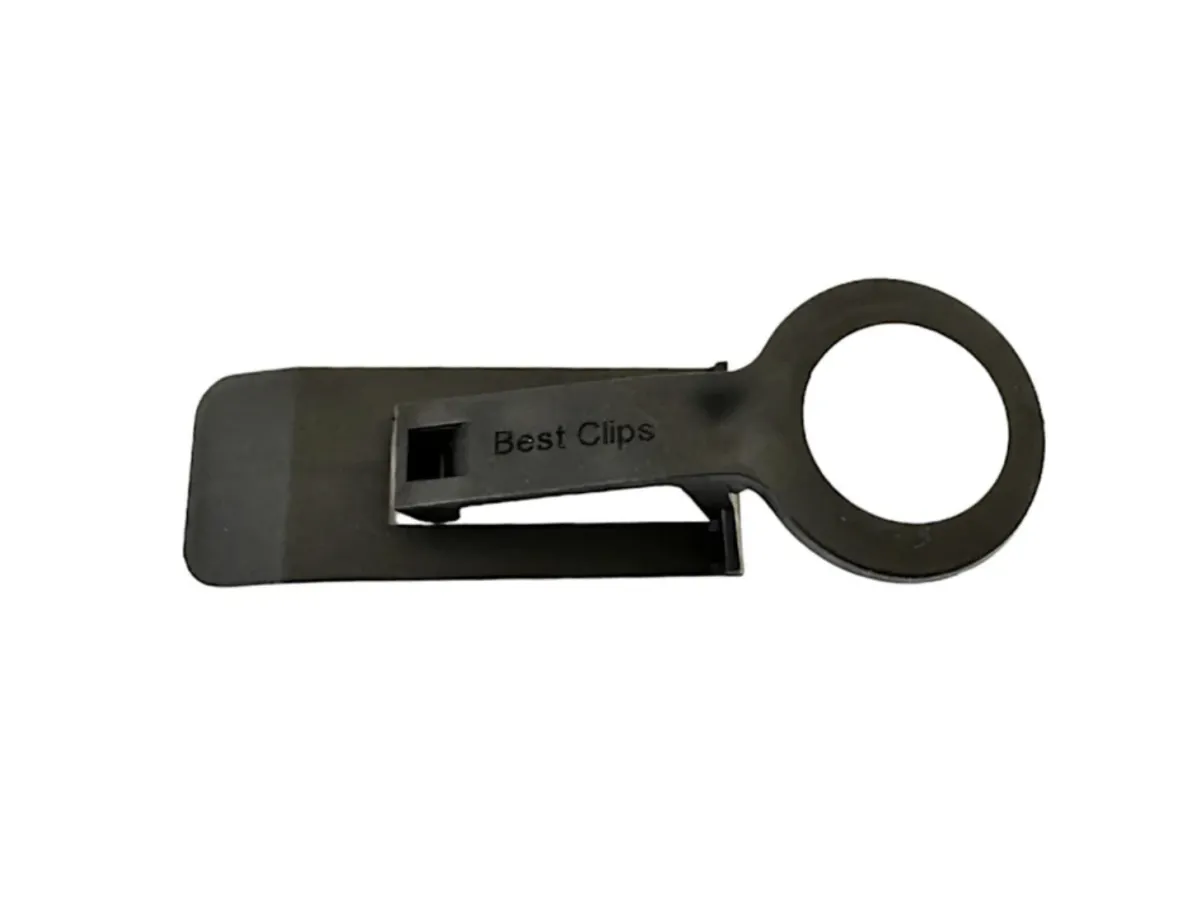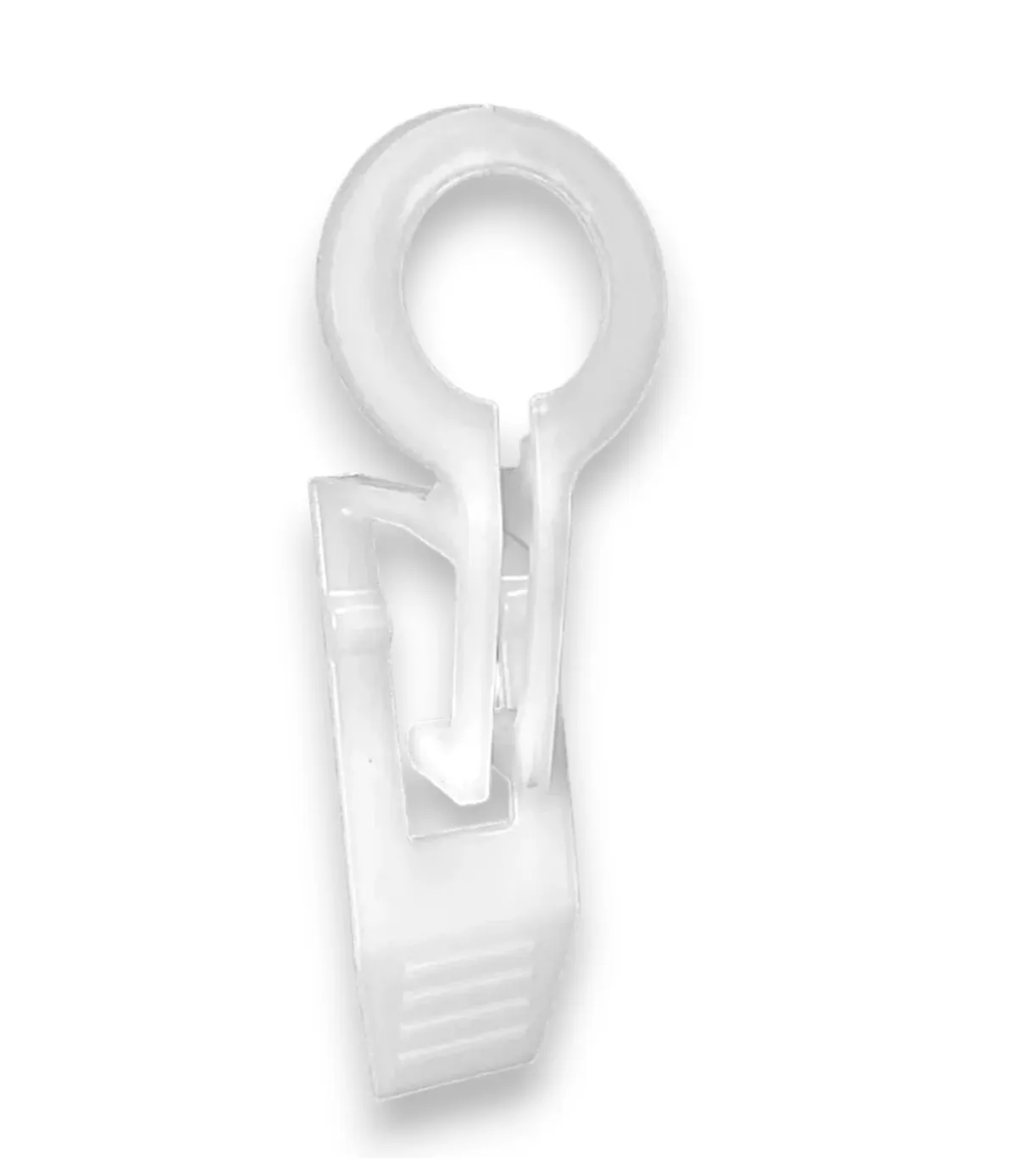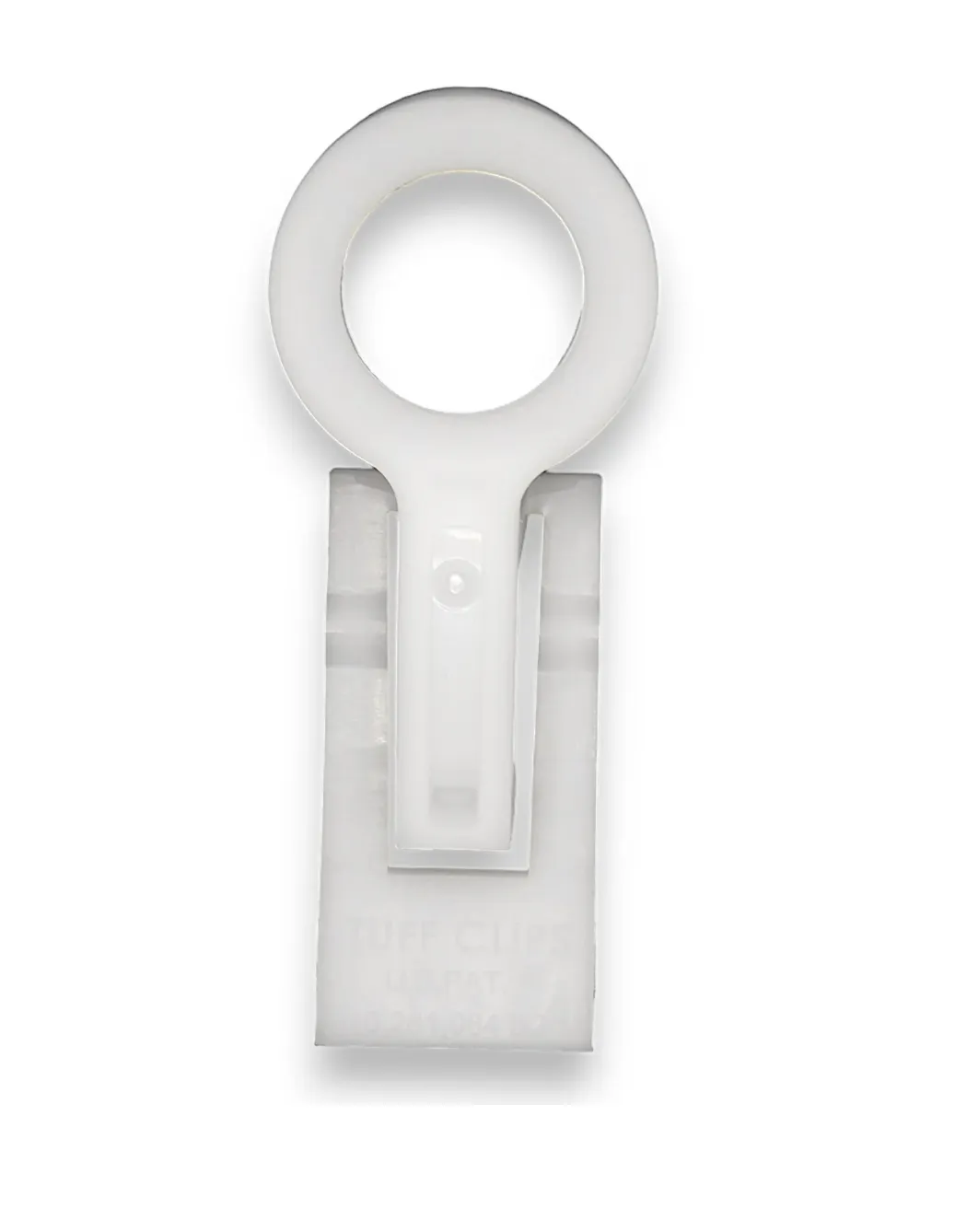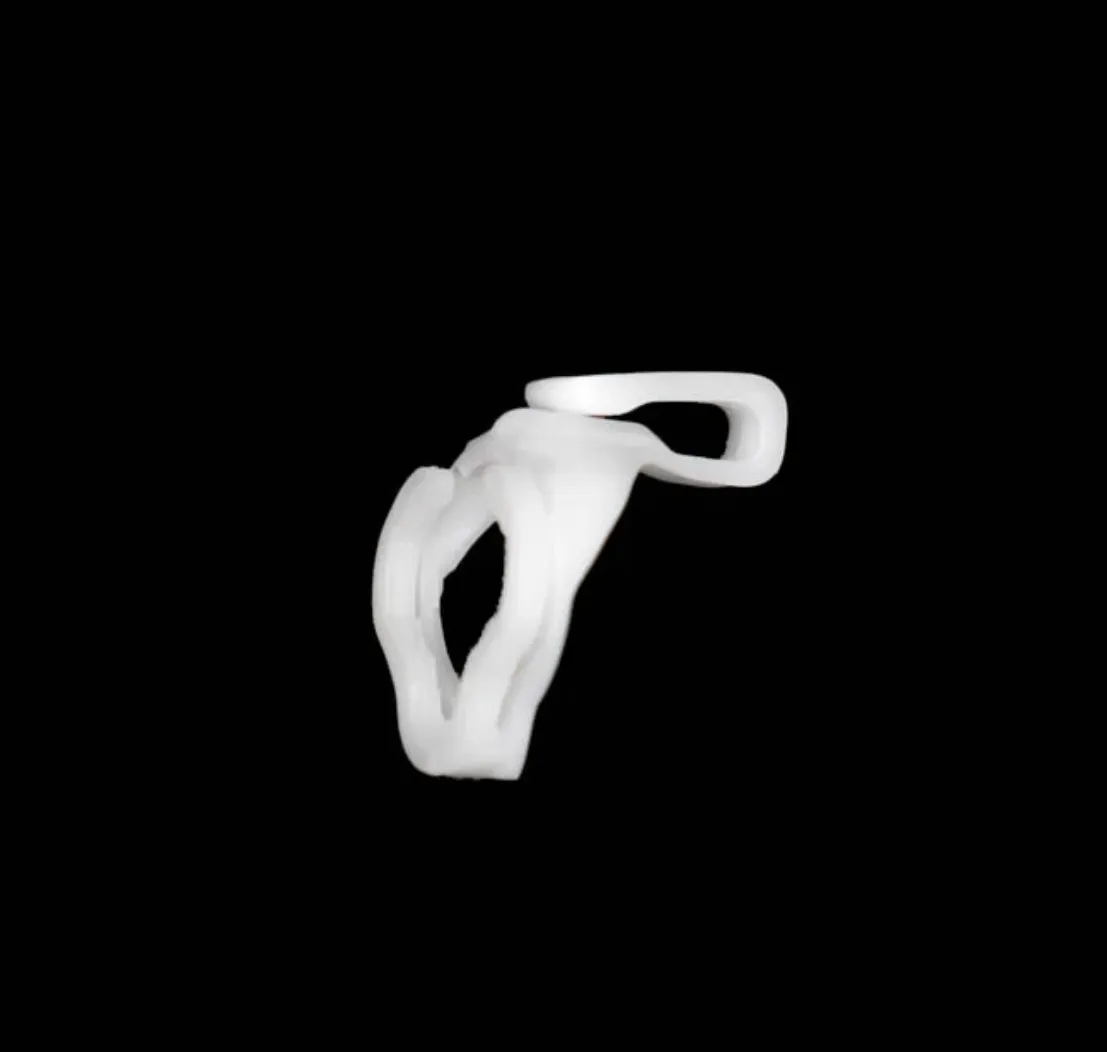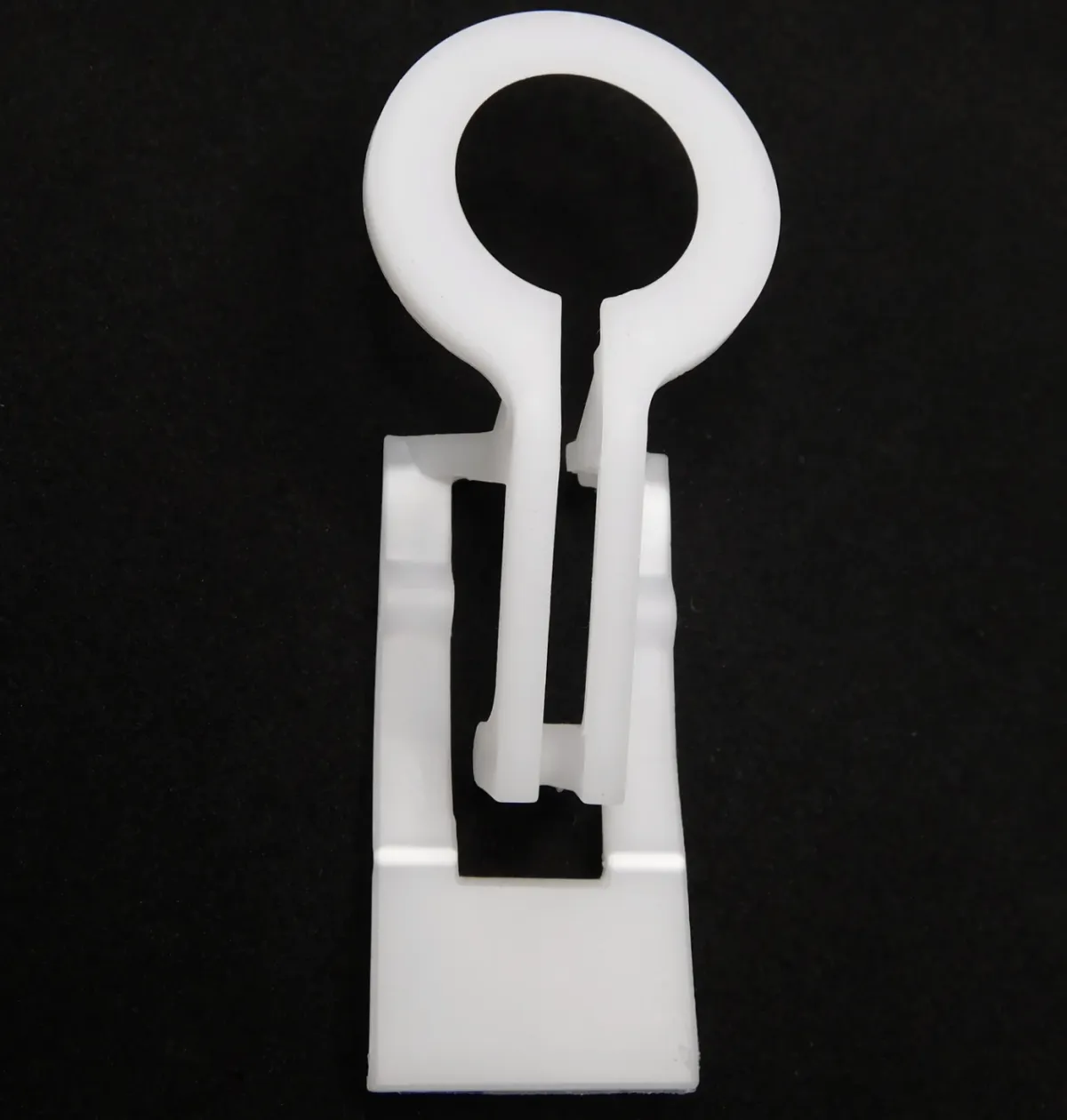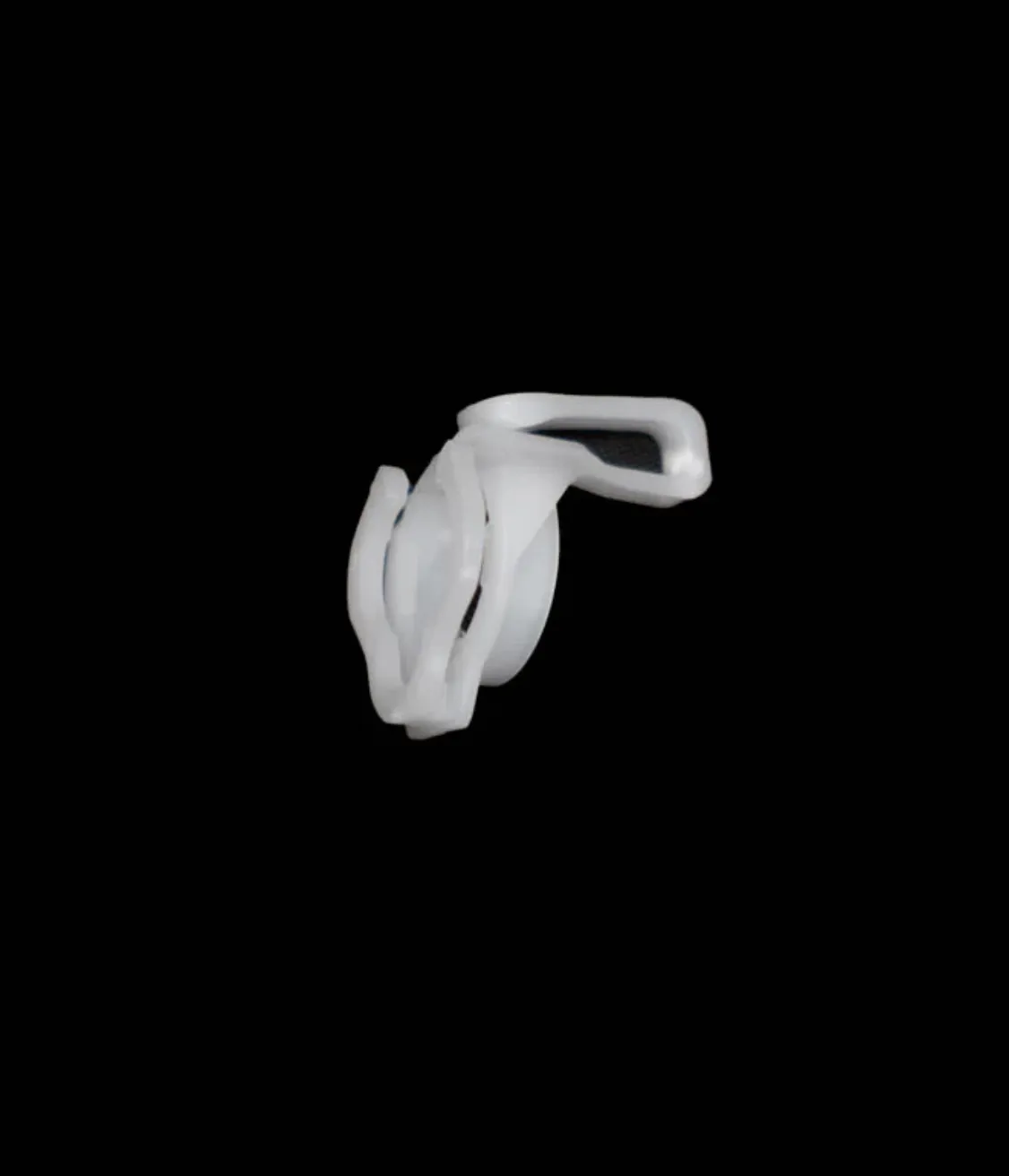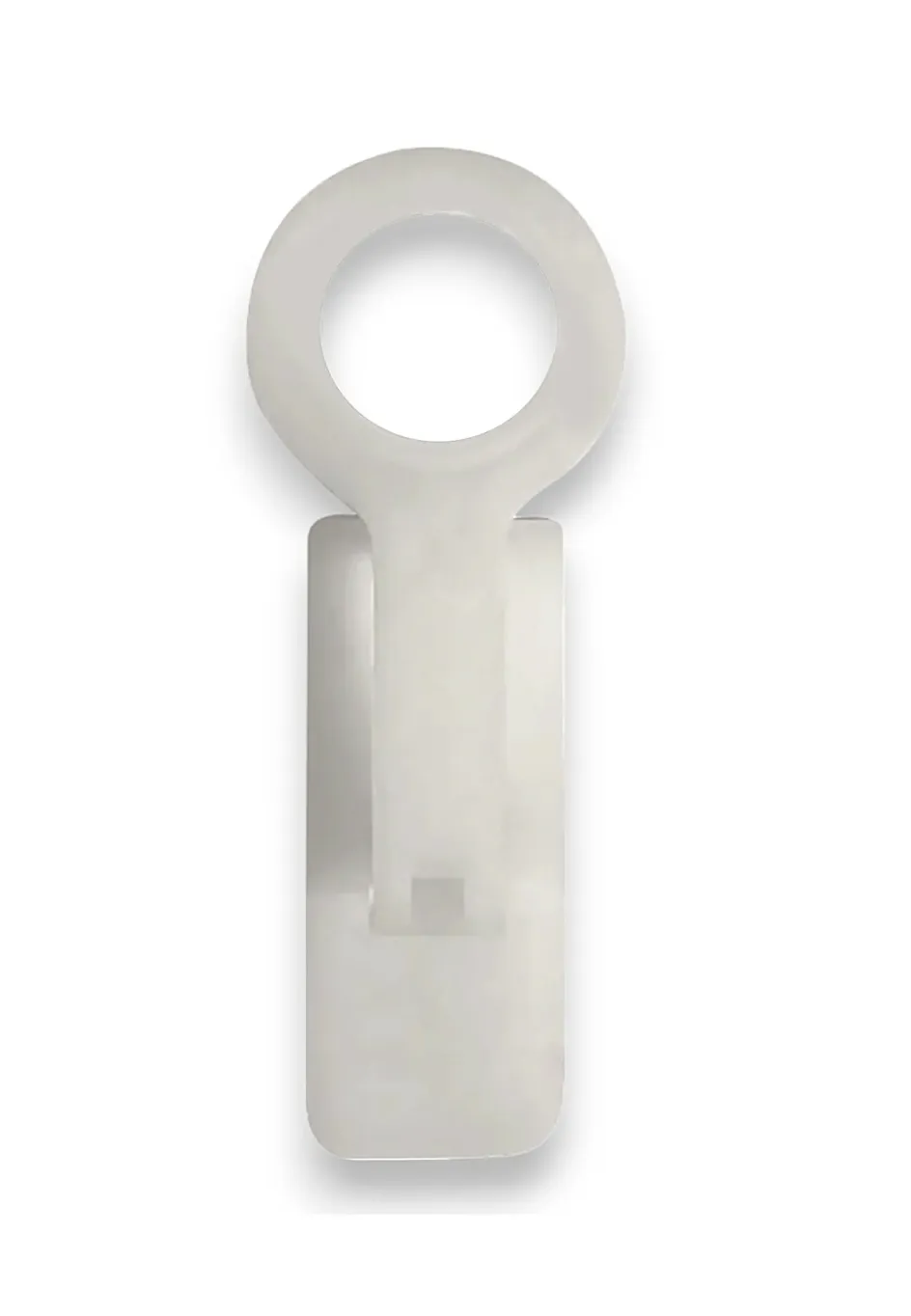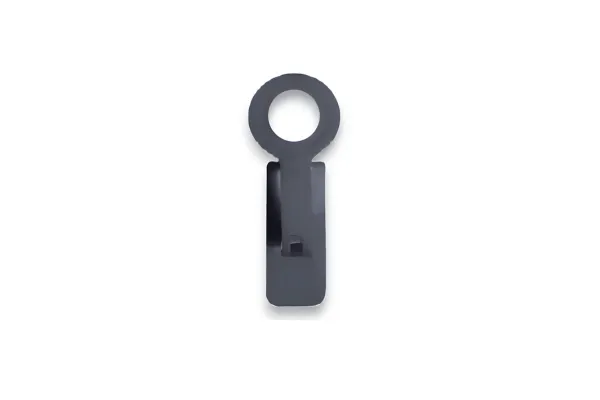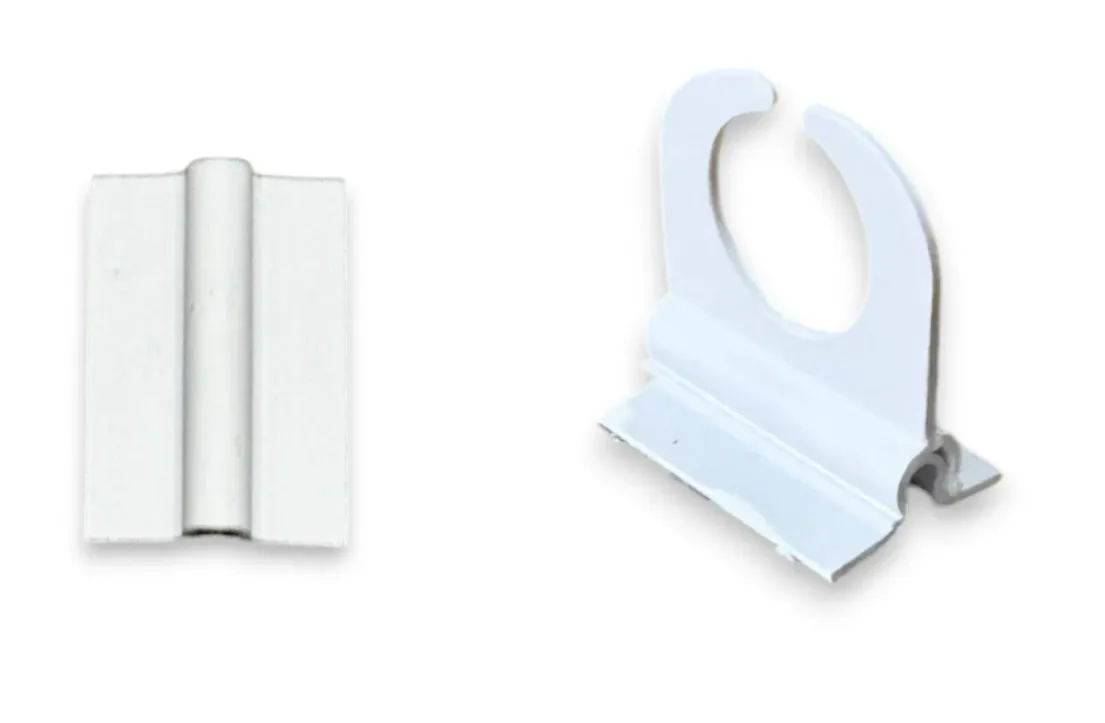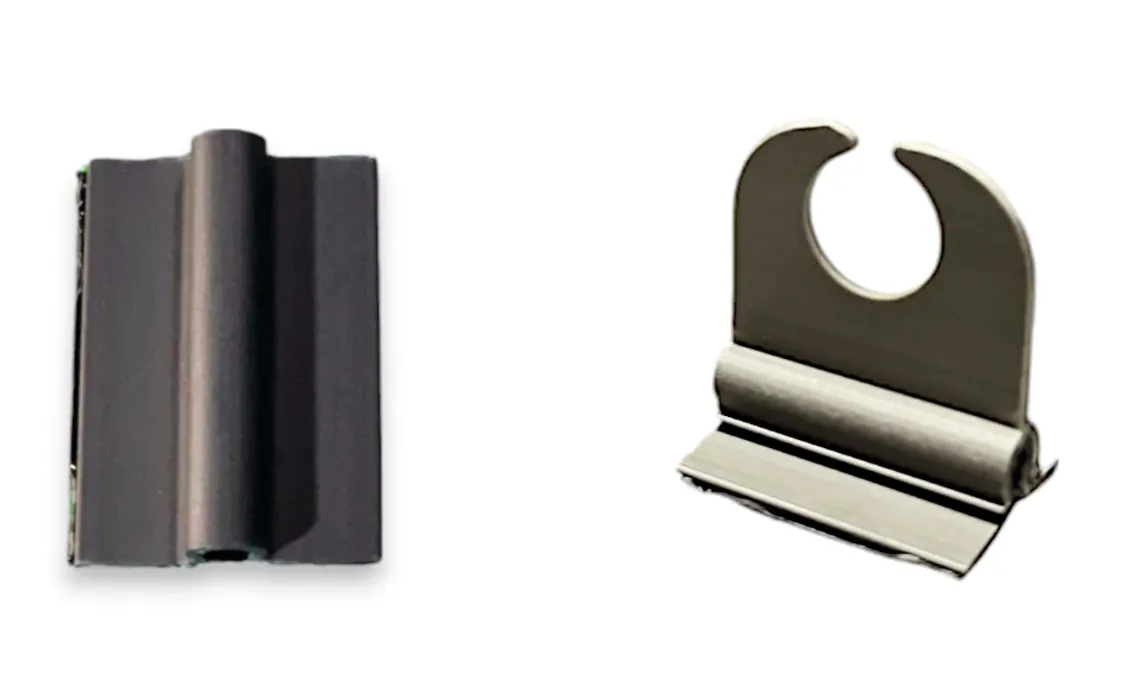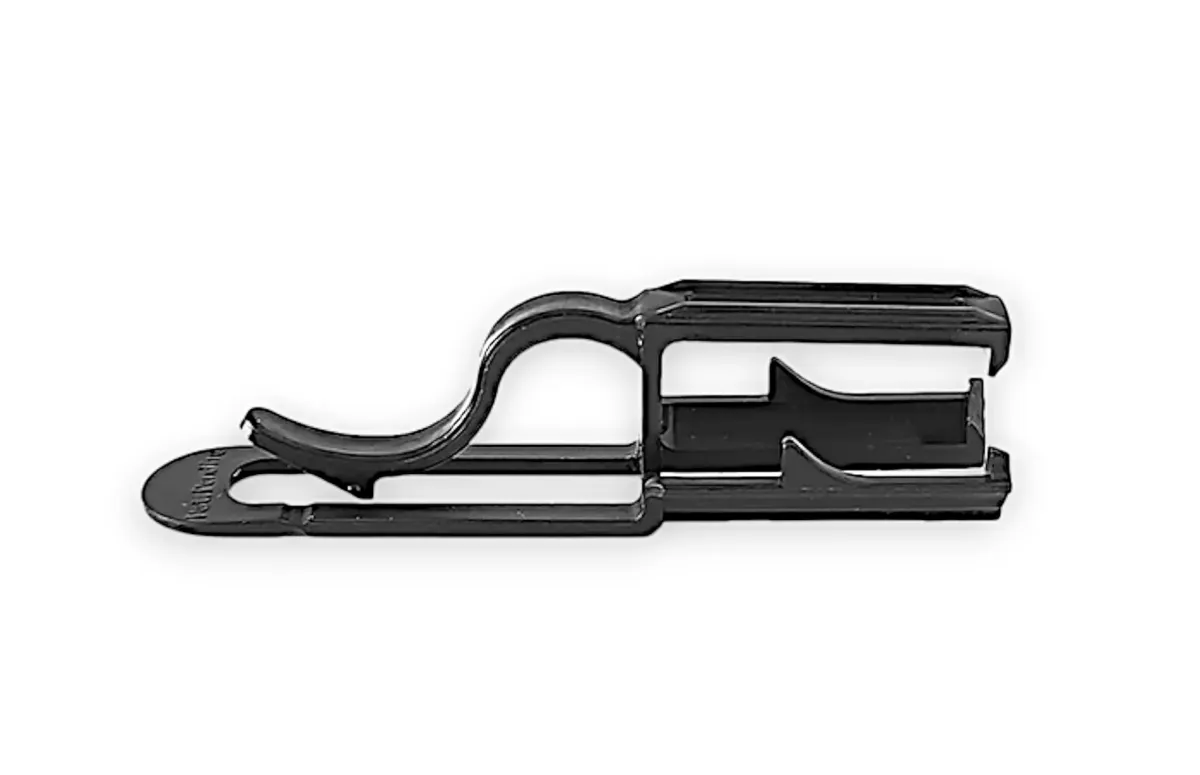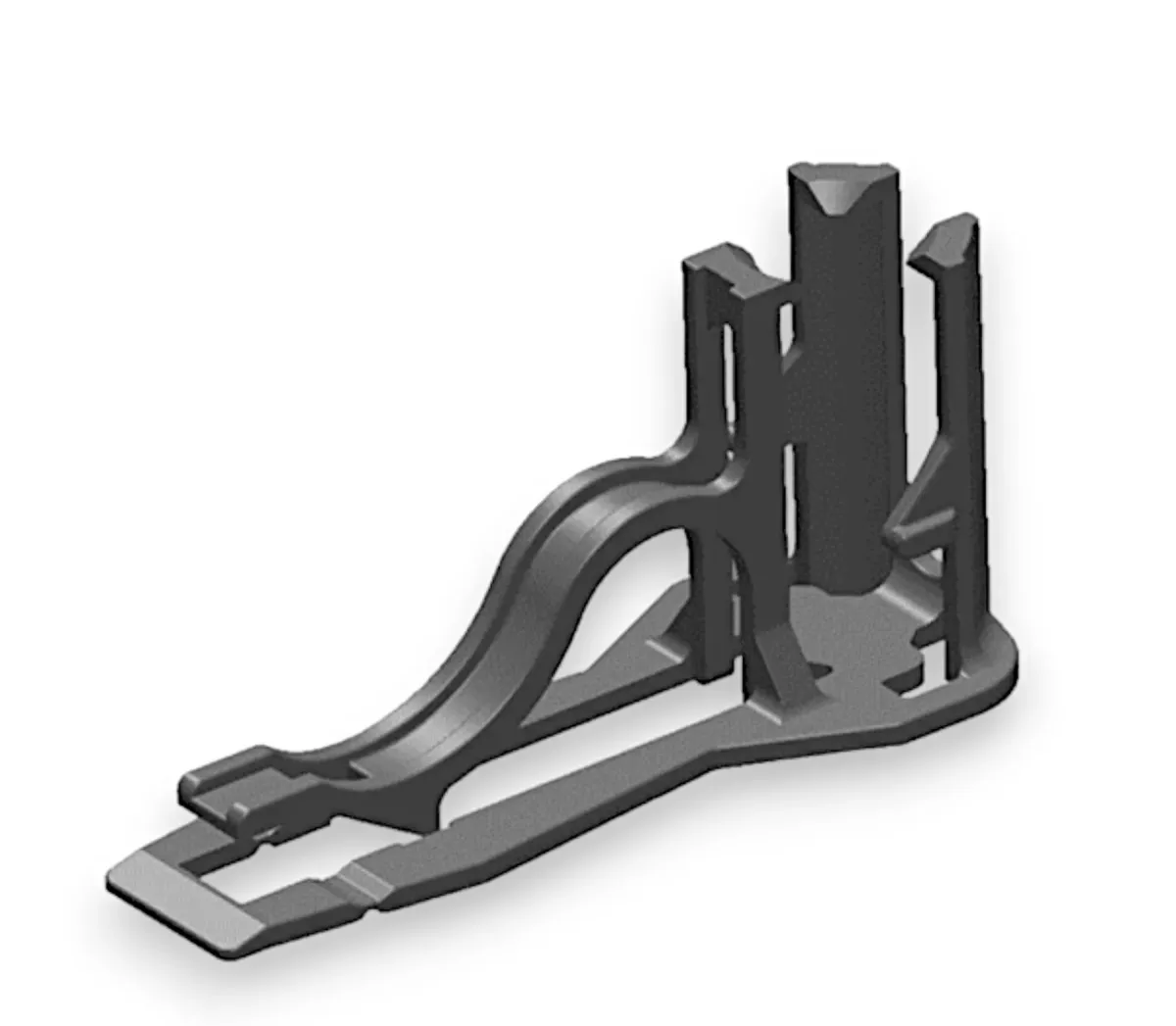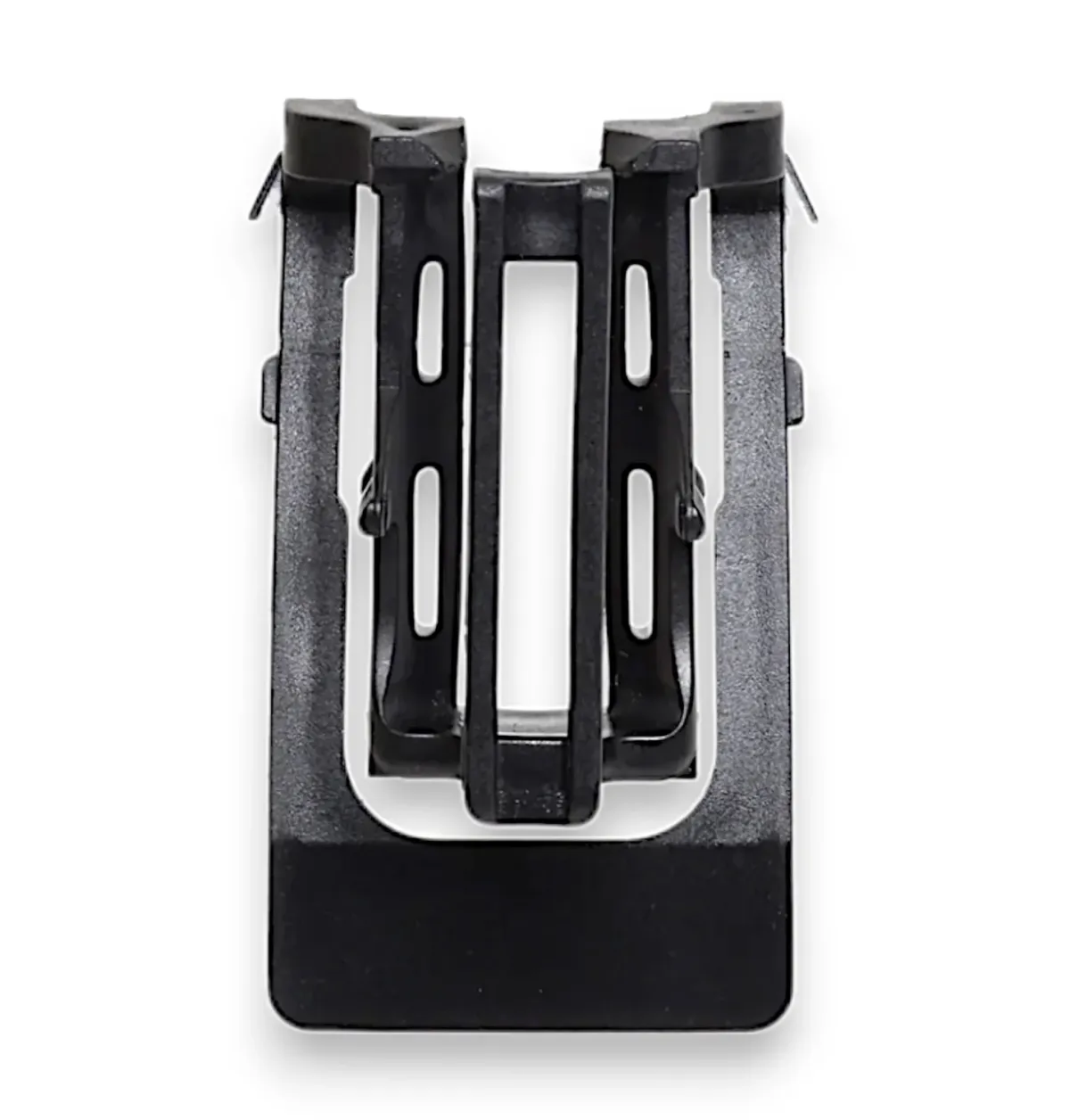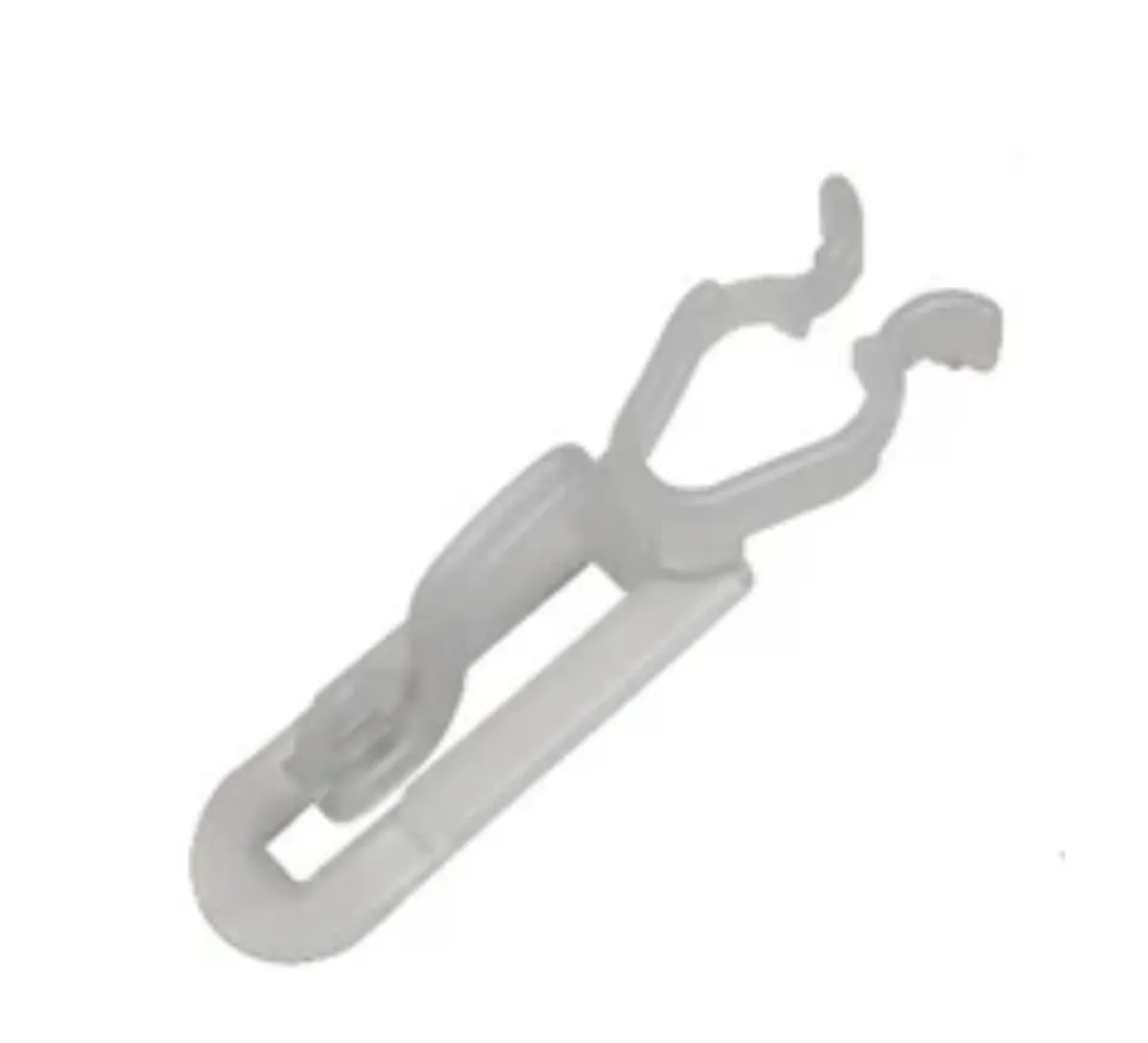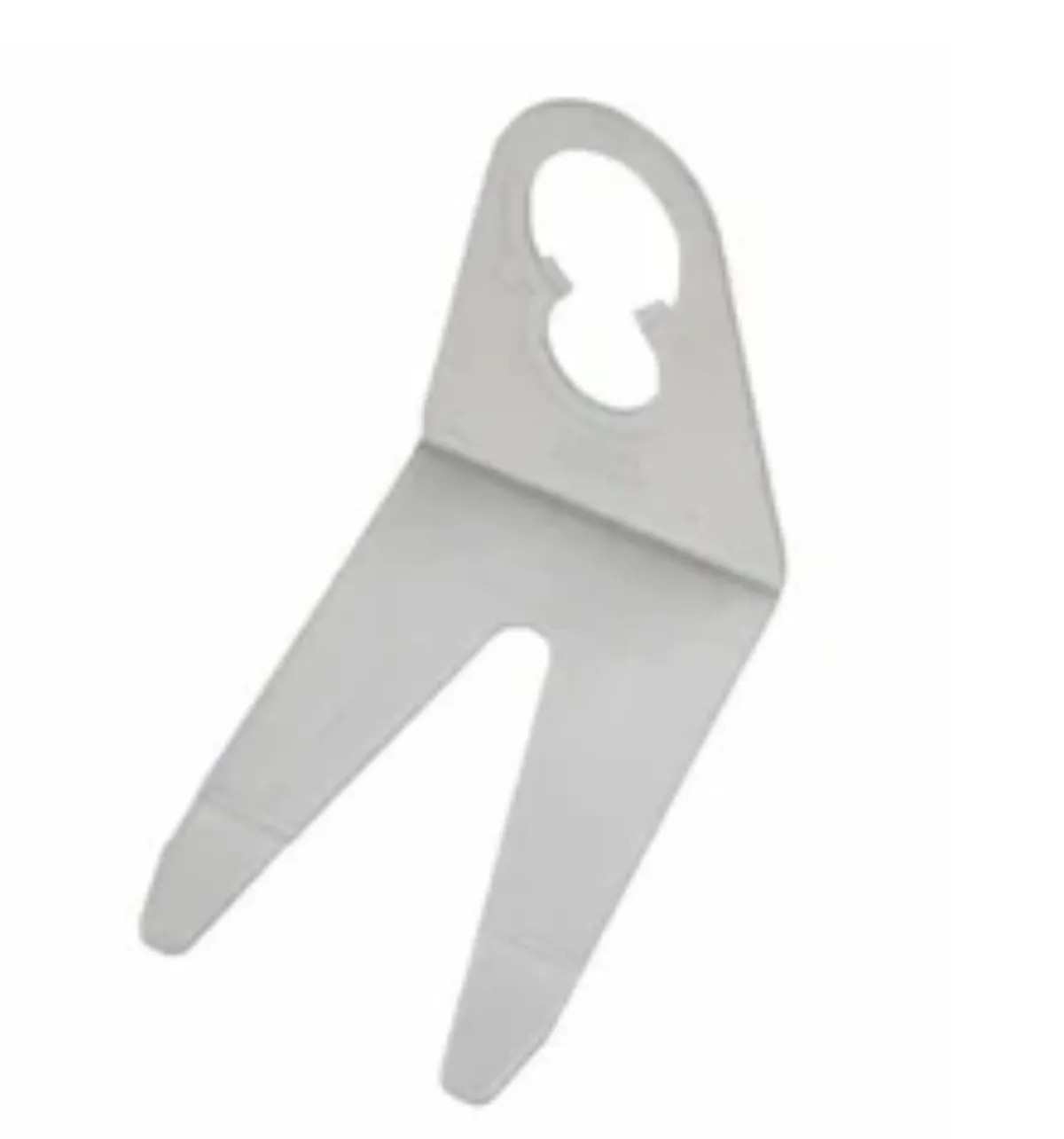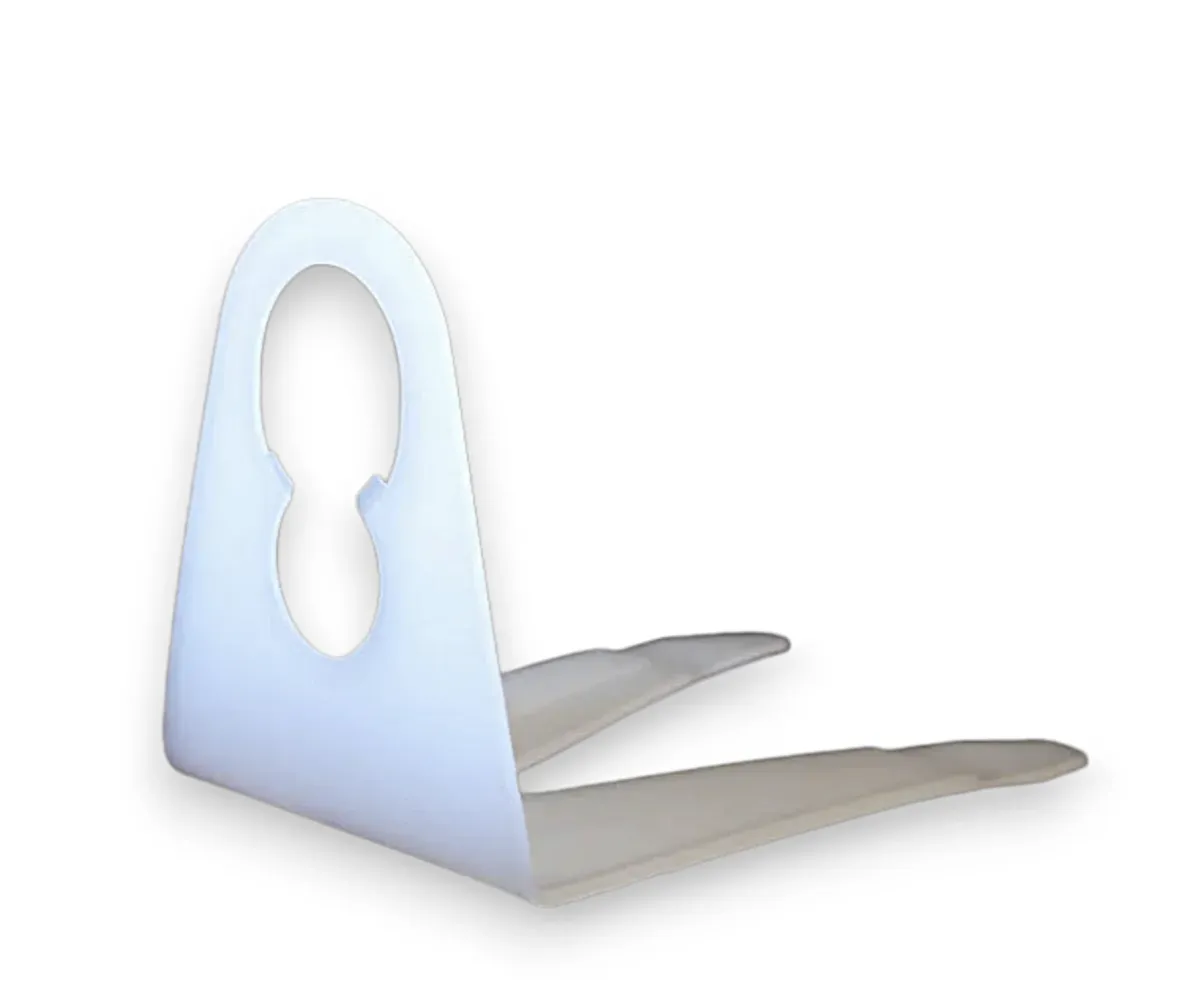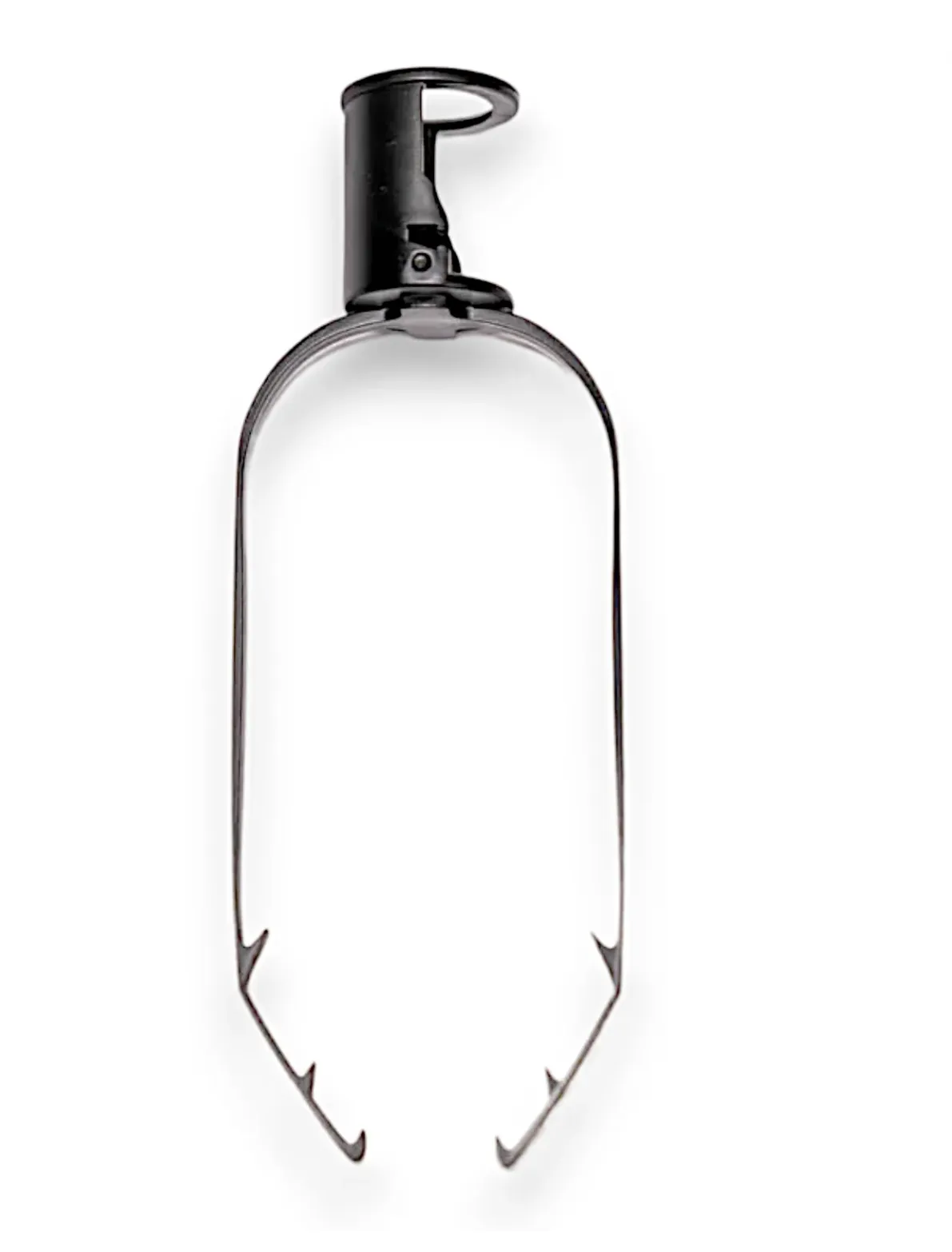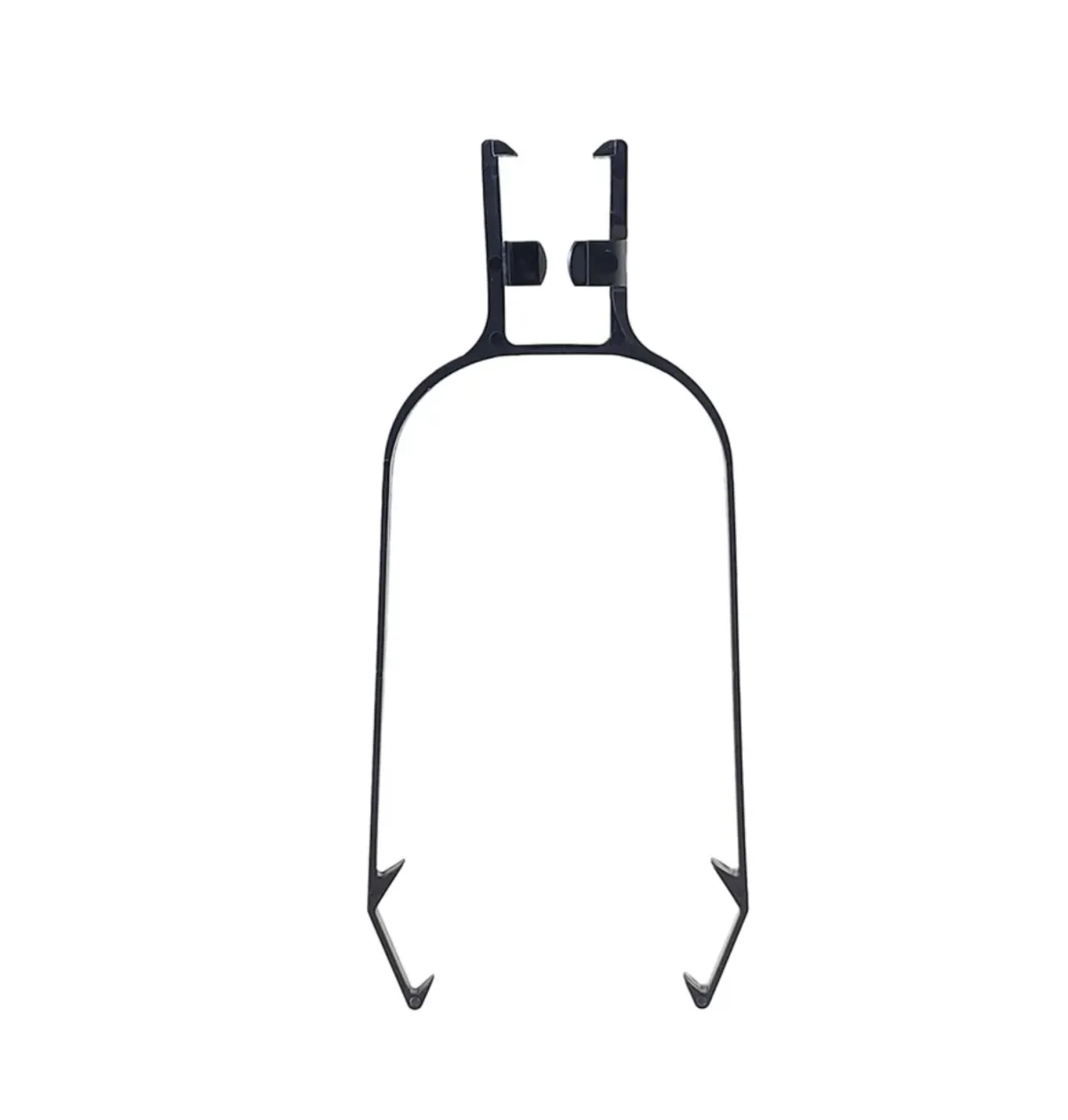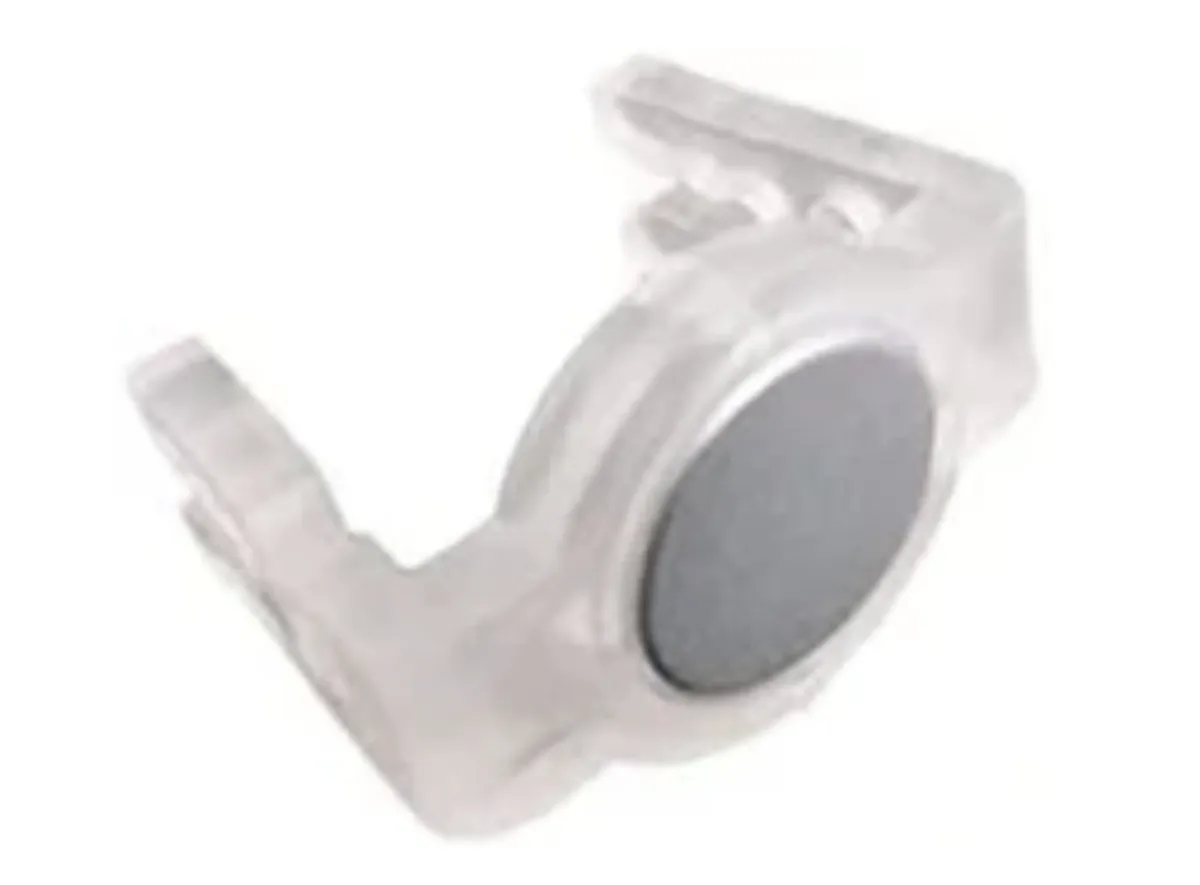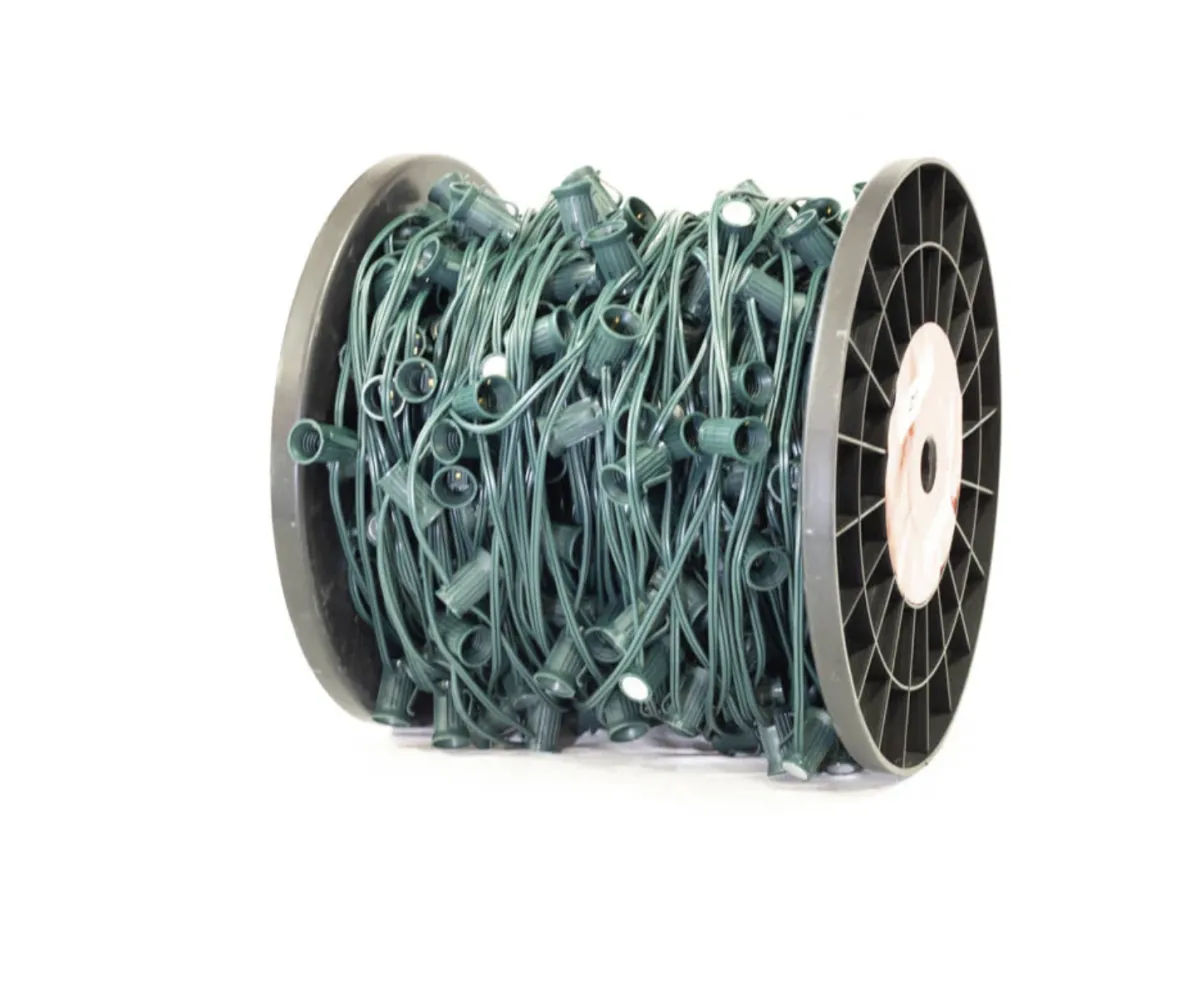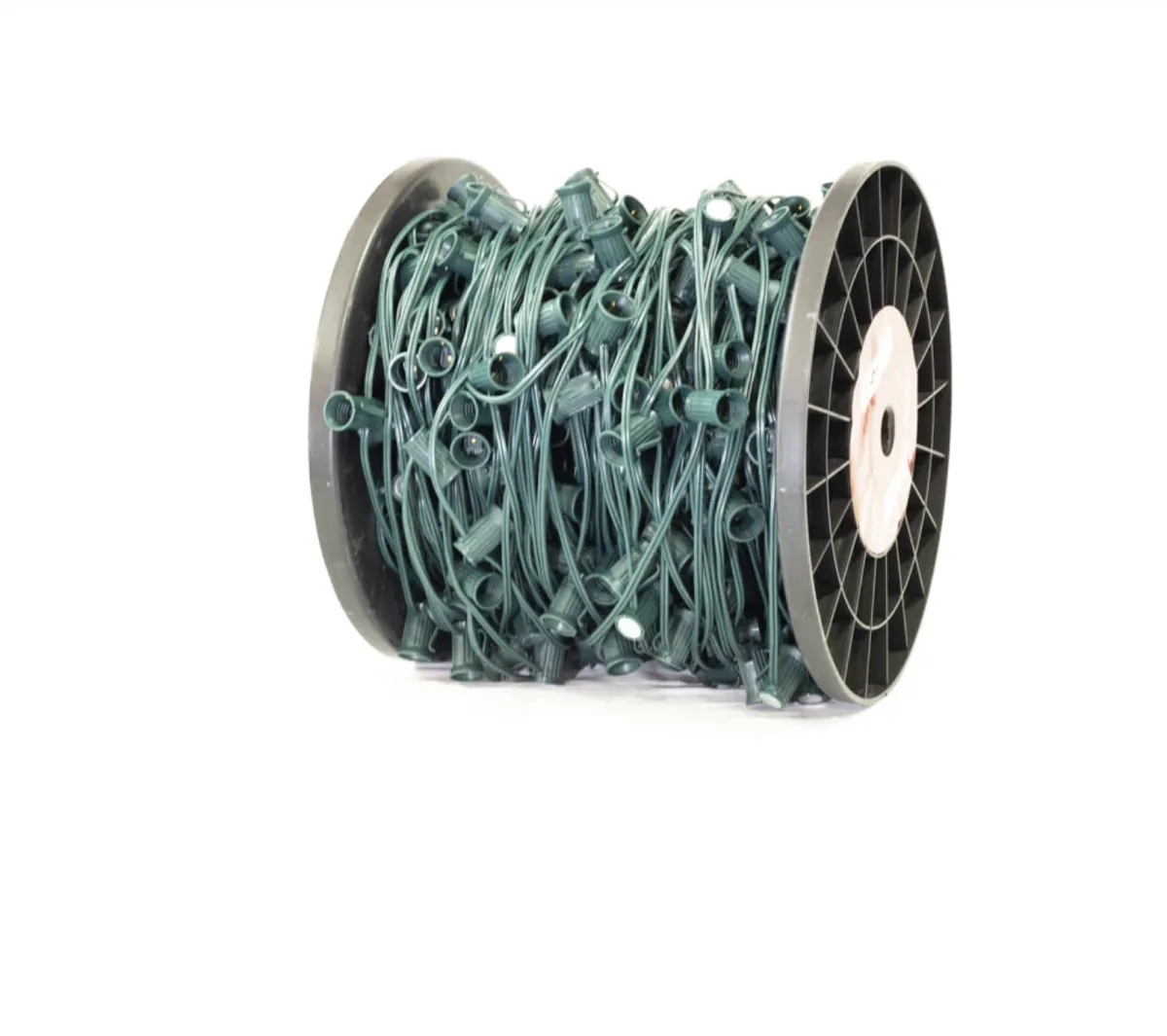Secure your Christmas lights effortlessly with our selection of professional grade clips
Secure Your Shine: Professional-Grade Christmas Light Clips for Every Surface
Click on any category below to jump directly to that section
Sturdy clips designed specifically for larger C9 bulbs. Perfect for rooflines and creating bold, visible displays.
Versatile clips tailored for medium-sized C7 bulbs. Ideal for various applications, from windows to outdoor structures.
Christmas Light Clips: Innovative clips with strong magnets for easy, damage-free installation on metal surfaces like gutters and downspouts.
Specialized clips for secure attachment along roof ridges and peaks, ensuring a perfectly straight light line on difficult angles.
Convenient pre-spaced clip strips for quick and uniform installation of light strings, saving time and effort.
Unique clips designed for specific surfaces or applications, such as brick, stucco, or wrapping lights around columns.
C9 Christmas Light Clips
C7 Christmas Light Clips
Christmas LiteClip & Strips
Streamline your holiday light installation with our commercial-grade LiteClips. Available for both C9 and C7 bulbs, these versatile clips easily secure between the socket and bulb, allowing for downward, upward, or straight-out positioning. For a complete, safe, and secure setup, pair with our LiteClipStrip mounting system. These efficient tools ensure quick and professional-looking installations for homes and businesses alike. Available in White or Brown.
Speciality Christmas Lights Clips
All-Purpose
Clip
The All-in-One Plus clip, favored by professional installers, accommodates C7, C9, C6, mini, and icicle lights, offering versatile horizontal gutter and vertical shingle mounting options, a tight grip for mini lights, layering capabilities for unique designs, and the ability to hang two light strings simultaneously, ensuring a perfect roof display.
Best Shingle
Tab Clip
This durable plastic shingle tab, more robust than standard versions, securely holds both C7 and C9 sockets, easily slides under shingles, and versatilely attaches to gutters, decks, and flat surfaces (when paired with a parapet clip), making it the perfect Christmas light accessory for various installation needs.
Tuff Tab
Clip
The durable Tuff Tabs, designed for C7 or C9 bulbs, feature Flex technology for easy installation over socketed bulbs, 360-degree rotation, outward-facing positioning on shingles or cedar shakes, two living hinges for secure hold, and weather-resistant construction for professional-grade Christmas light displays.
Christmas Light Ridge Clips
C9/C7 Best Enclosed
Ridge Clip
The C9/C7 Best Enclosed Ridge Clip (Patent Pending) is a durable, year-round solution for C7 and C9 socket strands and bulbs, featuring a fully enclosed design that securely holds lights in place without detachment, making it ideal for permanent or long-term installations.
Magnetic Christmas Lights Clips
Magnet Clip for C7/C9
Socket Wire
The Magnetic Clip for C7 or C9 Sockets, designed exclusively for SPT-1 wire (not compatible with LED stringer sets), features a high-strength solid magnet that securely holds lights horizontally or vertically on metal surfaces (excluding aluminum), allowing for quick, reusable installations year after year.
C9 Magnetic Spool
12" Spacing
This versatile lighting solution features heavy-duty, UV-protected 18-gauge SPT-1 wire rated for 840 watts, equipped with rust-resistant nickel-plated C9 magnetic sockets for secure attachment to ferrous metals, 12" spacing, 250' or 500' foot spool, compatible with E17 base incandescent and LED bulbs (sold separately), and suitable for both indoor and outdoor use.
C9 Magnetic Spool
15" Spacing
This versatile lighting solution features heavy-duty, UV-protected 18-gauge SPT-1 wire rated for 840 watts, equipped with rust-resistant nickel-plated C9 magnetic sockets spaced 15" apart on 250' or 500' spools, securely attaching to ferrous metals and compatible with E17 base incandescent and LED bulbs (sold separately) for both indoor and outdoor use.
Why Christmas Light Clips Are a Game-Changer
Transform your holiday decorating experience with professional-grade Christmas light clips. These versatile tools are the secret to creating clean, polished displays that withstand the elements all season long. Designed for various surfaces and bulb sizes, quality clips ensure your lights stay securely in place, avoiding the sloppy appearance and frequent adjustments often associated with cheaper alternatives. Easy to install and remove, these clips are favored by professionals nationwide for their durability and neat finish. By investing in commercial-grade clips, you'll save valuable time during both setup and takedown, allowing you to focus more on enjoying the festive season rather than fussing with your decorations. Make your holiday lighting effortless and impressive with the right clips, and elevate your display to a professional standard with minimal hassle.

Christmas Light Clips
for Damage-Free, Professional Displays
Upgrade your holiday decorating technique by replacing staple guns and nails with versatile Christmas light clips. These innovative tools not only protect your home and lights from damage but also allow for easy adjustments after installation. Available in various designs to suit different surfaces like gutters, shingles, and flat areas, light clips can securely hold multiple bulb sizes, including C7, C9, icicle, and mini lights. By switching to clips, you'll preserve your property's integrity, extend the life of your lights, and gain the flexibility to perfect your holiday illumination with ease. Embrace this simple yet effective solution to elevate your decorating process and achieve professional-looking results without the hassle and potential harm of traditional fastening methods.
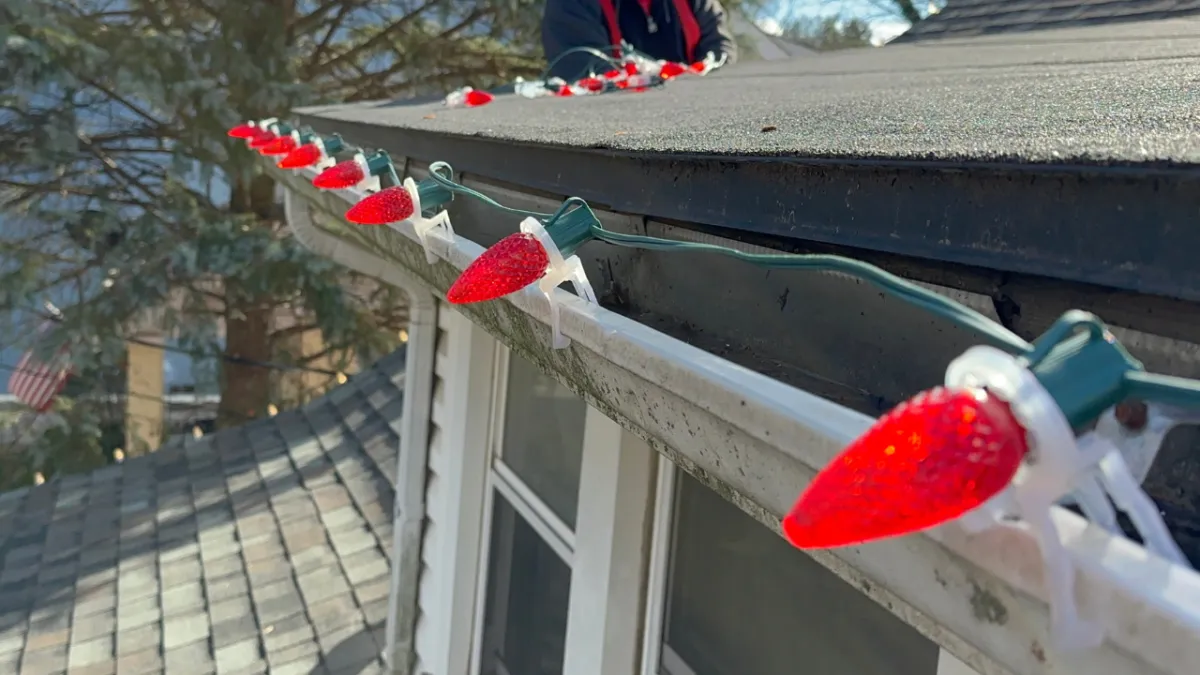
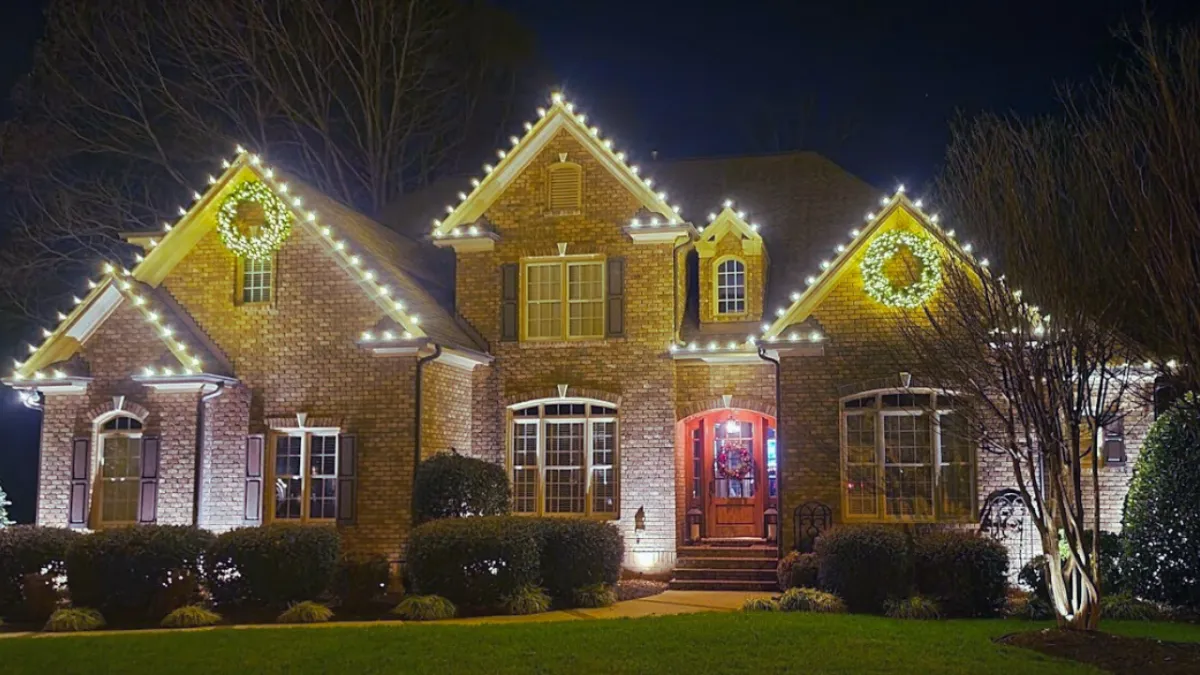
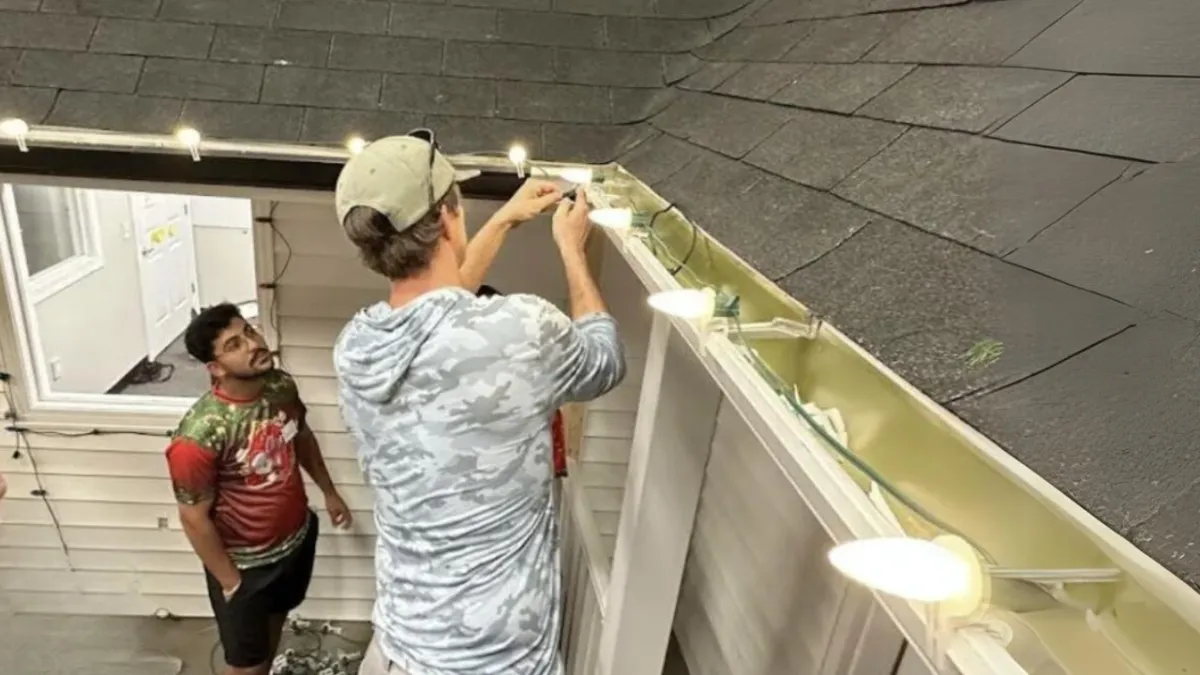
Frequently Asked Questions
How do Christmas light clips compare to traditional methods like staples or nails?
Christmas light clips are superior to staples or nails because they don't damage your home or lights, allow for easy adjustments and removal, and provide a cleaner, more professional look. They also make it easier to reuse your lights year after year without causing additional wear and tear.
Can using Christmas light clips save time during installation and removal?
Yes, using Christmas light clips can significantly reduce setup and takedown time. They're designed for easy installation and removal, allowing you to spend less time on decorating and more time enjoying the holiday season.
How do Christmas light clips improve the longevity of my holiday lights?
By securely holding your lights in place without pinching or damaging the wires, Christmas light clips help extend the life of your holiday lights. They also protect lights from harsh weather conditions, reducing the need for frequent replacements.
How do professional-grade Christmas light clips contribute to a better overall display?
Professional-grade clips ensure your lights stay in place, creating a neat and uniform appearance. They allow for precise positioning and spacing of lights, resulting in a polished, high-quality display that enhances your home's festive appeal.
What surfaces can Christmas light clips be used on?
Christmas light clips are designed for use on various surfaces, including gutters, shingles, and flat areas. There are also specialized clips for different applications, such as ridge clips and all-purpose clips.
How do Christmas light clips benefit holiday decorating?
Christmas light clips offer several benefits: they protect your home and lights from damage, allow for easy adjustments after installation, work on various surfaces, securely hold multiple bulb sizes, and help achieve a professional-looking display without the hassle of traditional fastening methods.
Discover Expert Tips on Our Blog

Stay Safe on Steep Roofs: Essential Equipment and Footwear
As professional Christmas light installers, our work brings joy and beauty to homes during the holiday season. However, it's crucial to remember that our job involves significant risks, particularly when working at heights. This comprehensive guide will explore essential safety practices, tools, and strategies to ensure you and your team stay safe while delivering exceptional service.
The Importance of Safety in Christmas Light Installation
Safety should always be your top priority in the Christmas light installation business. No matter how much money you make or how efficient you become, all of that means nothing if you or a team member gets injured on the job. Falls from roofs can result in severe injuries or worse, and they can happen in the blink of an eye.
Remember, you're not just responsible for your own safety, but also for the safety of your team members. By implementing and consistently following proper safety protocols, you protect your health, your business, and your employees.
Common Hazards in Christmas Light Installation
Before we dive into safety practices, let's review some common hazards you might encounter:
1. Slippery surfaces: Roofs can be slick due to morning frost, rain, or moss growth.
2. Steep pitches: The steepness of a roof can make it challenging to maintain balance.
3. Weather changes: Conditions can change rapidly, making a previously safe situation dangerous.
4. Electrical hazards: Working with electrical equipment outdoors always carries risks.
5. Ladder accidents: Improper ladder use is a common cause of injuries.
6. Fatigue: Long hours during the busy season can lead to decreased alertness.
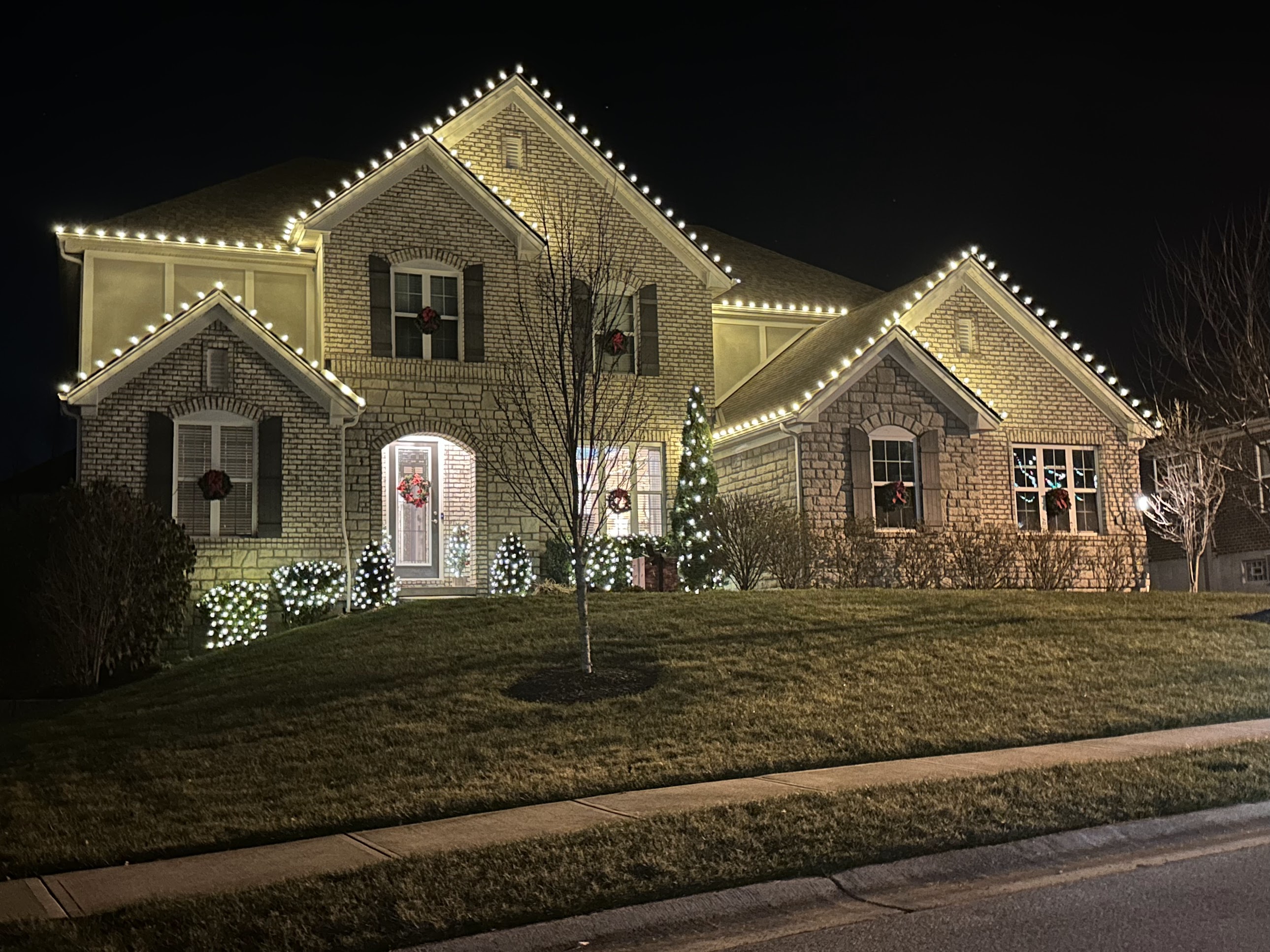
Essential Safety Equipment
Having the right safety equipment is crucial. Here are some must-have items:
Safety Harness
A properly fitted safety harness is your most important piece of safety equipment. It should be worn whenever you're working at heights. Make sure to inspect your harness before each use and replace it if you notice any wear or damage.
Roof Anchors
Roof anchors provide a secure point to attach your safety harness. The Ridge Pro is a popular option, but remember that it's only OSHA approved as an anchor when properly bolted to the roof.
Proper Footwear
Good footwear is essential for maintaining grip on various roof surfaces. Consider these options:
1. Cougar Paws: Designed specifically for roof work, these shoes provide excellent traction.
2. Fila Memory Foam Work Shoes: Some installers find these provide even better grip than Cougar Paws.
3. Hey Dude shoes: Another option worth testing for roof work.
Ladder Stabilizers
Ladder stabilizers help prevent your ladder from slipping or falling. They're especially important when working on uneven ground or approaching gutters.
Specialized Tools for Safe Installation
Several specialized tools can help make your work safer and more efficient:
The Goat
The Goat is a popular tool that hooks over the roof peak, providing a stable point to hold onto while working. While not OSHA approved as a safety device on its own, it can significantly improve your stability and confidence on the roof.
Pitch Hoppers
Pitch Hoppers are another useful tool for working on steep roofs. They provide a stable platform to kneel or stand on. Remember, when using a Pitch Hopper, either have all your weight on it or none at all. Putting only part of your weight on it can cause it to slip.
Rope Systems
For very high or challenging roofs, a rope system can provide an extra layer of safety. This involves running a rope over the peak of the house and securing it to a sturdy anchor point (like a large tree) on the opposite side. However, only use this method if you're trained in proper knot tying and rope safety techniques.

Safe Work Practices
Having the right equipment is only part of the equation. Safe work practices are equally important:
Assess the Roof Before Starting
Before you start any job, take the time to carefully assess the roof. Look for:
1. Signs of wear or damage on shingles
2. The pitch of the roof
3. Potential slip hazards like moss or frost
4. Stable areas for placing your ladder
Plan Your Movements
Don't start working until you have a clear plan. Know where you'll move, where you'll place your tools, and how you'll access different areas of the roof. Having a plan reduces the likelihood of making risky moves on the fly.
Use the Right Ladder Technique
When using a ladder:
1. Ensure it's on stable, level ground
2. Maintain three points of contact at all times
3. Don't overreach - move the ladder instead
4. Use ladder stabilizers for extra security
Always Use Fall Protection
Even if you feel comfortable on a roof, always use proper fall protection. This typically means wearing a safety harness attached to a secure anchor point.
Be Weather Aware
Check the weather forecast before starting work and be prepared to reschedule if conditions are unsafe. Be especially cautious of:
1. Rain or snow, which can make surfaces slippery
2. High winds, which can affect your balance and make ladder use dangerous
3. Extreme temperatures, which can affect your physical performance
Take Regular Breaks
Fatigue can significantly increase your risk of accidents. Take regular breaks, stay hydrated, and don't push yourself beyond your limits, especially during busy periods.

Training Your Team
If you have a team, proper training is crucial:
1. Provide comprehensive safety training before allowing anyone to work on roofs
2. Regularly review and update safety procedures
3. Encourage team members to speak up about safety concerns
4. Lead by example - always follow safety procedures yourself
Consider creating a safety checklist that team members must complete before starting each job. This can help ensure that no important safety steps are missed.
Emergency Preparedness
Despite our best efforts, accidents can still happen. Be prepared:
1. Always have a fully stocked first aid kit easily accessible
2. Ensure all team members know basic first aid
3. Have an emergency plan for what to do if someone falls
4. Keep emergency contact numbers readily available
Remember, if someone falls while wearing a harness, they need to be rescued quickly to avoid suspension trauma. Have a plan for how you would safely get someone down in this situation.
Leveraging Technology for Safety
Modern technology can help enhance your safety practices:
Safety Apps
Consider using safety-focused apps that can help you track and manage safety procedures. Some apps can even send automatic alerts if a worker falls or remains motionless for too long.
Weather Apps
Use reliable weather apps to stay informed about changing conditions that could affect your work safety.
Project Management Software
While not directly safety-related, good project management software can help you avoid overbooking, which can lead to rushed work and increased risk.
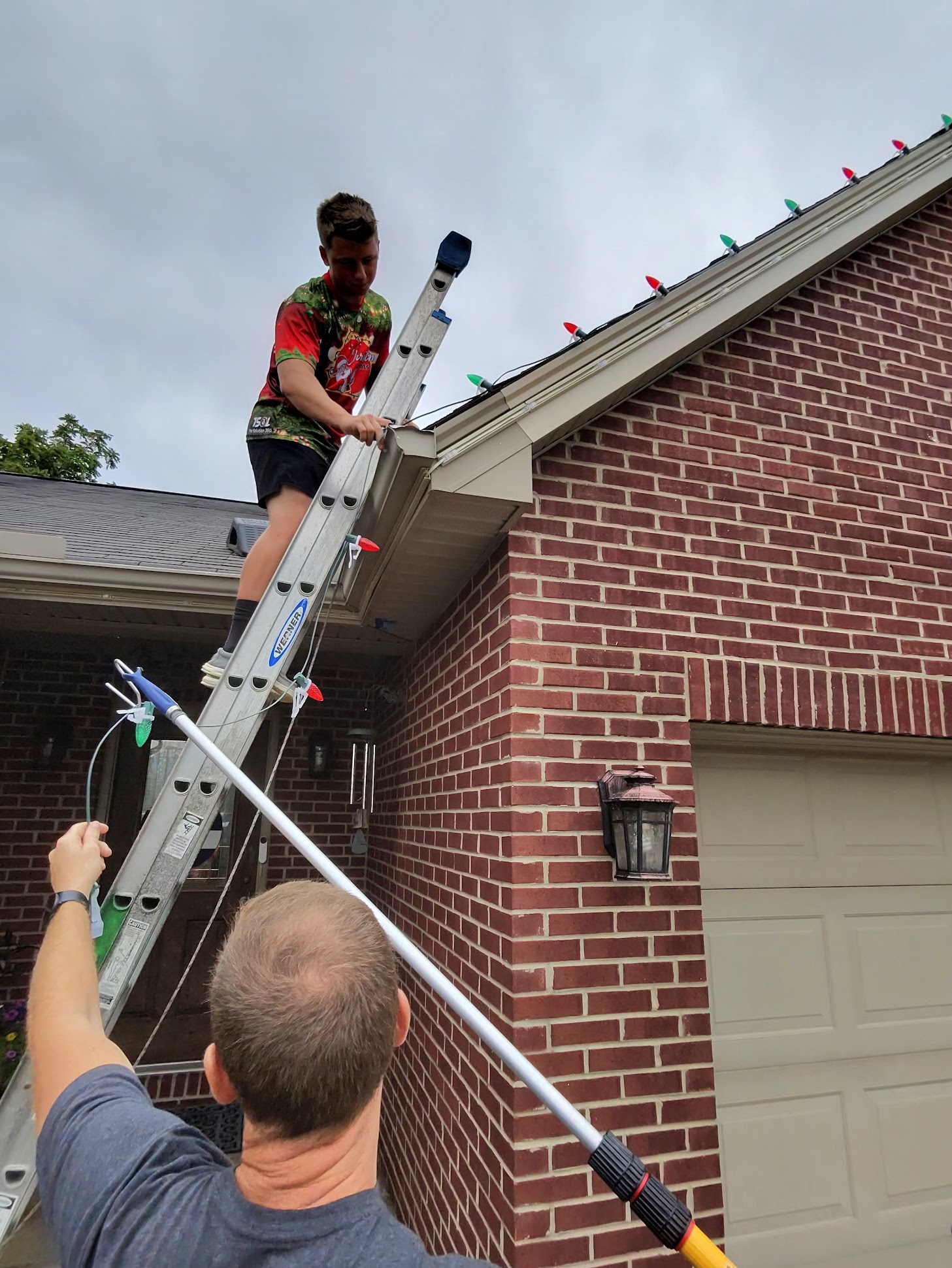
The Business Case for Safety
Prioritizing safety isn't just about avoiding accidents - it's good business:
1. It reduces the risk of costly injuries and workers' compensation claims
2. It can lower your insurance premiums
3. It enhances your reputation as a professional, responsible business
4. It improves employee morale and retention
Remember, one serious accident can potentially bankrupt your business. The time and money invested in safety measures are always well spent.
Continuous Improvement in Safety
Safety isn't a one-time achievement - it's an ongoing process:
1. Regularly review and update your safety procedures
2. Stay informed about new safety equipment and best practices
3. Encourage feedback from your team about safety concerns
4. Conduct "near miss" analyses to learn from close calls
Consider joining professional associations related to holiday lighting or exterior services. These can be great sources of up-to-date safety information.
In the Christmas light installation business, safety should always be your top priority. By using the right equipment, following safe work practices, properly training your team, and staying prepared for emergencies, you can significantly reduce the risks associated with our work.
Remember, no job is worth risking your health or life. If a situation feels unsafe, it probably is. Don't be afraid to turn down jobs that you can't complete safely, and never cut corners on safety to save time or money.
By prioritizing safety, you protect yourself, your team, and your business. You also demonstrate professionalism and care to your clients, which can lead to better reviews, more referrals, and long-term success in the Christmas light installation industry.
Stay safe out there, and may your holiday season be merry, bright, and incident-free!
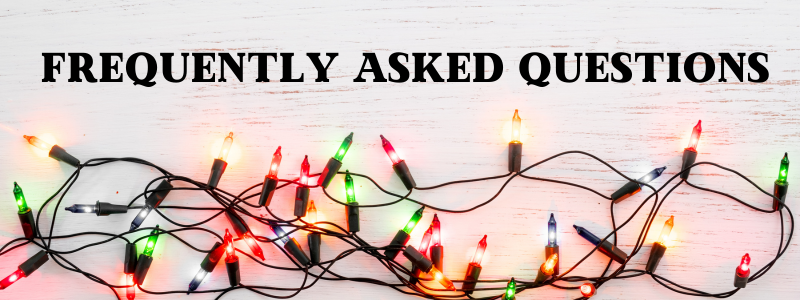
1. Q: What is the most important piece of safety equipment for Christmas light installation?
A: The most important piece of safety equipment is a properly fitted safety harness. It should be worn whenever working at heights and inspected before each use. Replace it immediately if you notice any wear or damage.
2. Q: Are tools like The Goat and Pitch Hoppers OSHA-approved safety devices?
A: No, tools like The Goat and Pitch Hoppers are not OSHA-approved safety devices on their own. While they can significantly improve stability and confidence on the roof, they should be used in conjunction with proper fall protection equipment like a safety harness and anchor point.
3. Q: What type of footwear is best for roof work during Christmas light installation?
A: Good options for roof work include Cougar Paws (designed specifically for roof work), Fila Memory Foam Work Shoes (which some installers find provide even better grip), and Hey Dude shoes. The key is to choose footwear that provides excellent traction on various roof surfaces.
4. Q: How often should I inspect my safety equipment?
A: You should inspect all your safety equipment, including harnesses, ropes, and anchors, before each use. Look for signs of wear, damage, or degradation. If you notice any issues, replace the equipment immediately.
5. Q: What should I do if the weather changes suddenly while I'm on a job?
A: If weather conditions change suddenly and become unsafe (e.g., rain, high winds, or extreme temperatures), it's best to stop work immediately and safely descend from the roof. Safety should always be prioritized over completing a job.
6. Q: How can I ensure my team follows proper safety procedures?
A: To ensure your team follows proper safety procedures: provide comprehensive safety training before allowing anyone to work on roofs, regularly review and update safety procedures, encourage team members to speak up about safety concerns, and lead by example by always following safety procedures yourself. Consider implementing a safety checklist that must be completed before each job.
7. Q: What should be included in an emergency plan for Christmas light installation?
A: An emergency plan should include steps for what to do if someone falls, how to rescue someone suspended in a harness, the location of the nearest hospital, emergency contact numbers, and the location of first aid supplies. All team members should be familiar with this plan.
8. Q: Is it necessary to use fall protection on every roof, even low-pitched ones?
A: Yes, it's recommended to use fall protection on every roof, regardless of the pitch. Even on low-pitched roofs, unexpected factors like weather conditions or a misstep can lead to falls. It's always better to err on the side of caution when it comes to safety.
9. Q: How can technology help improve safety in Christmas light installation?
A: Technology can enhance safety through safety-focused apps that help track and manage safety procedures, reliable weather apps to stay informed about changing conditions, and project management software to avoid overbooking which can lead to rushed work and increased risk.
10. Q: What are the business benefits of prioritizing safety in Christmas light installation?
A: Prioritizing safety can reduce the risk of costly injuries and workers' compensation claims, potentially lower insurance premiums, enhance your reputation as a professional and responsible business, and improve employee morale and retention. Additionally, it can prevent a serious accident from potentially bankrupting your business.
Copyright ©2025 All Right Reserved website designed by christmaslights.io
Terms of Service / Privacy Policy
Have questions or need assistance?
Contact us at (855)619-LITE


